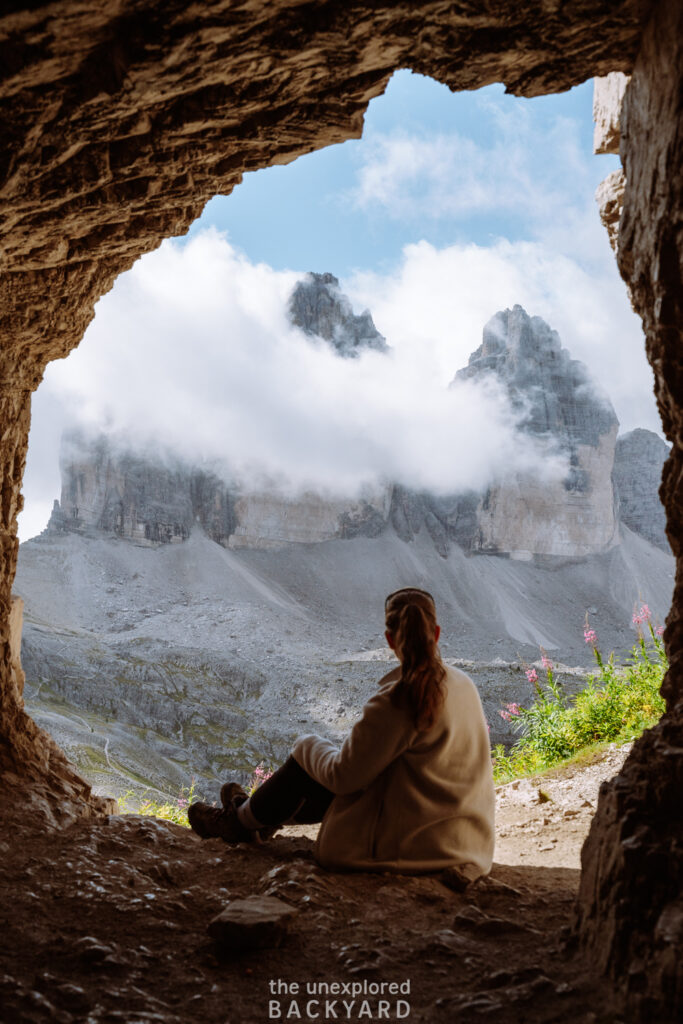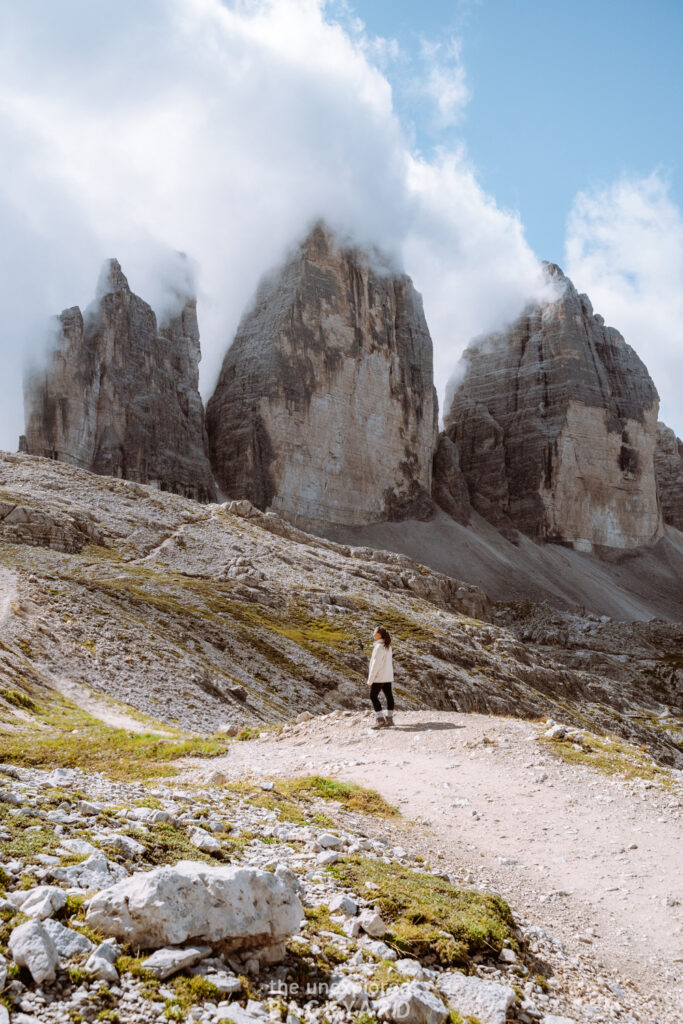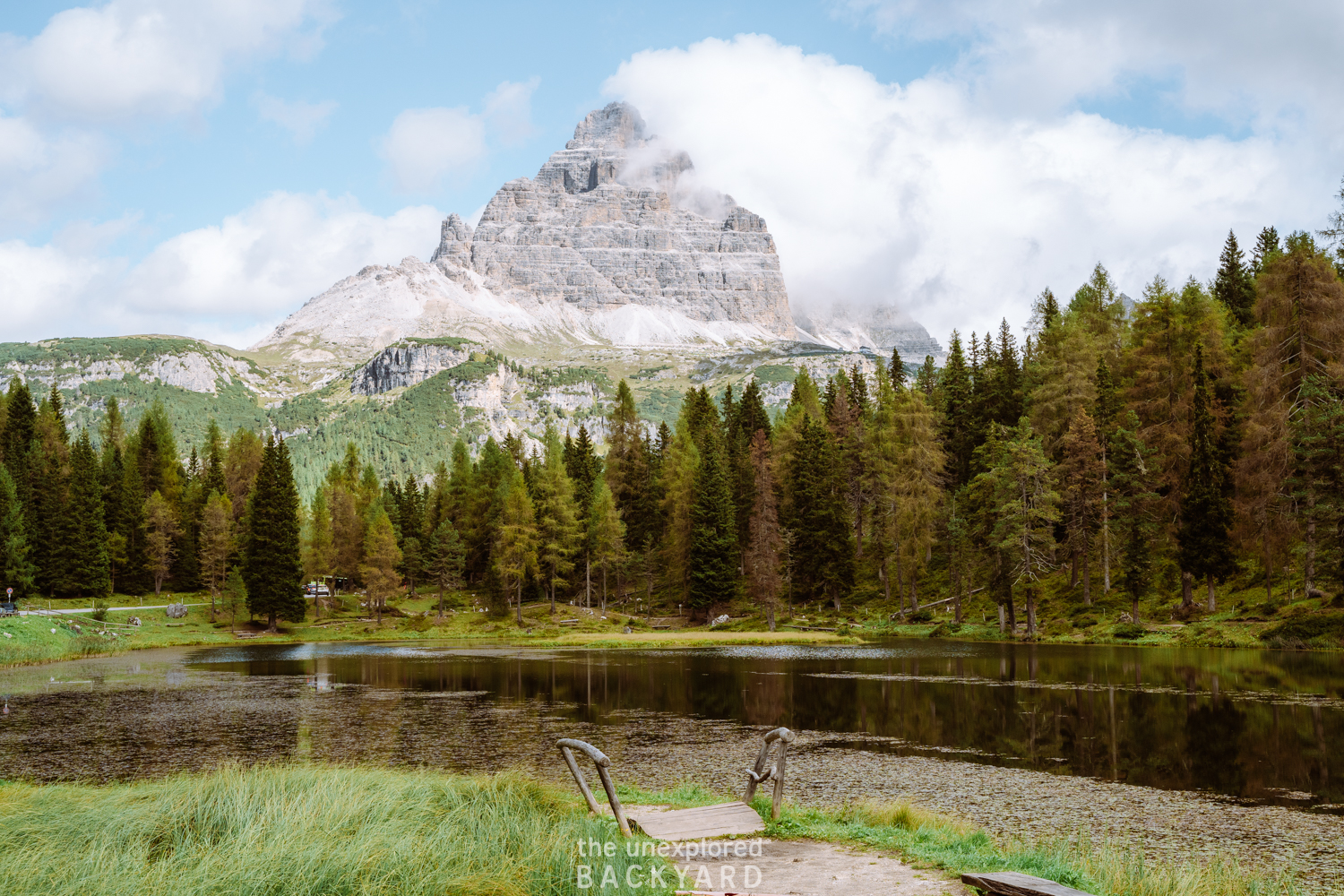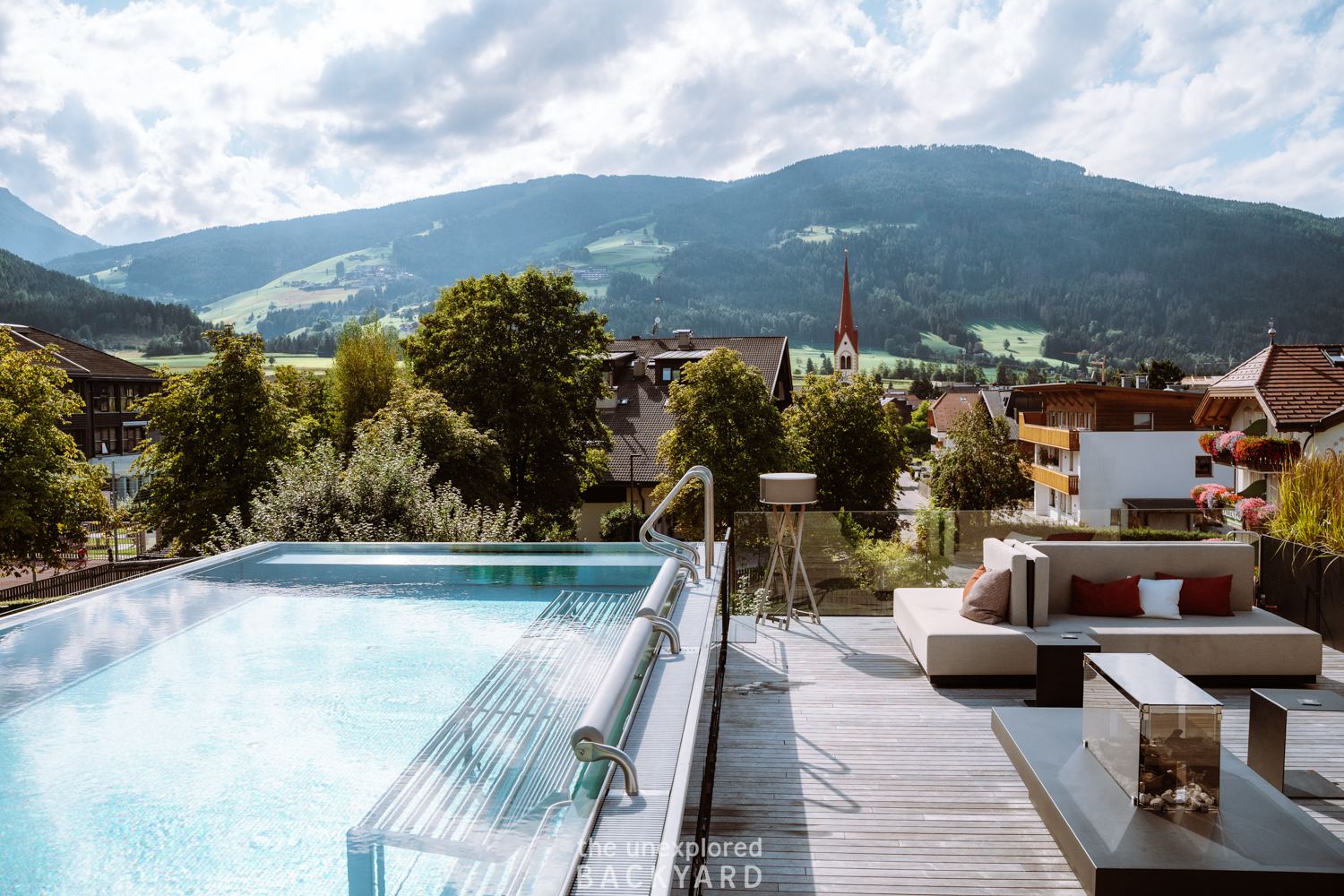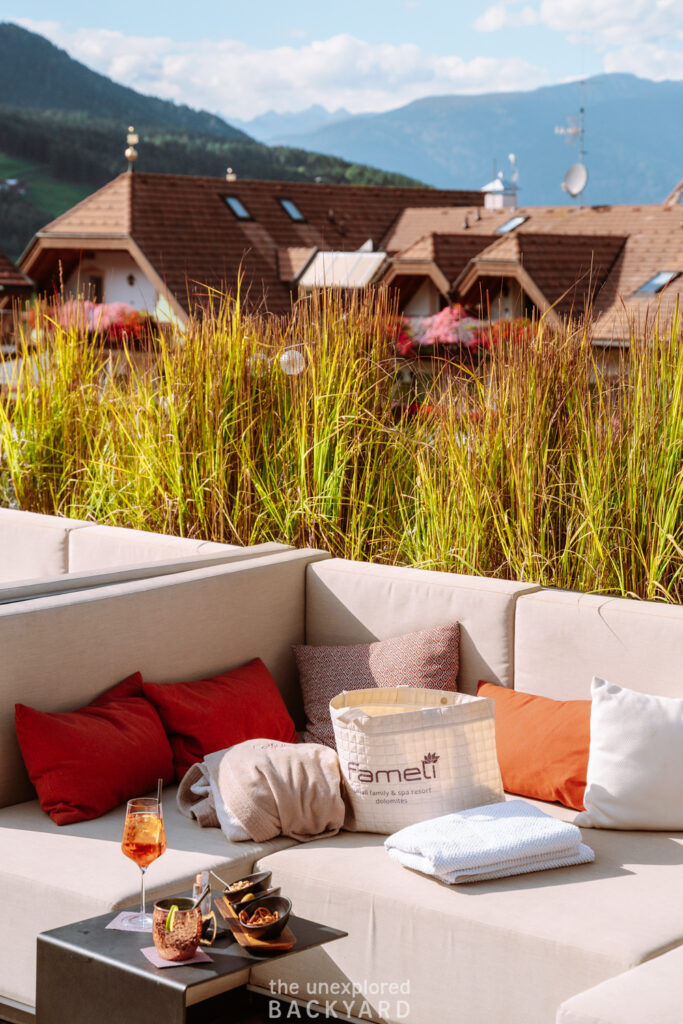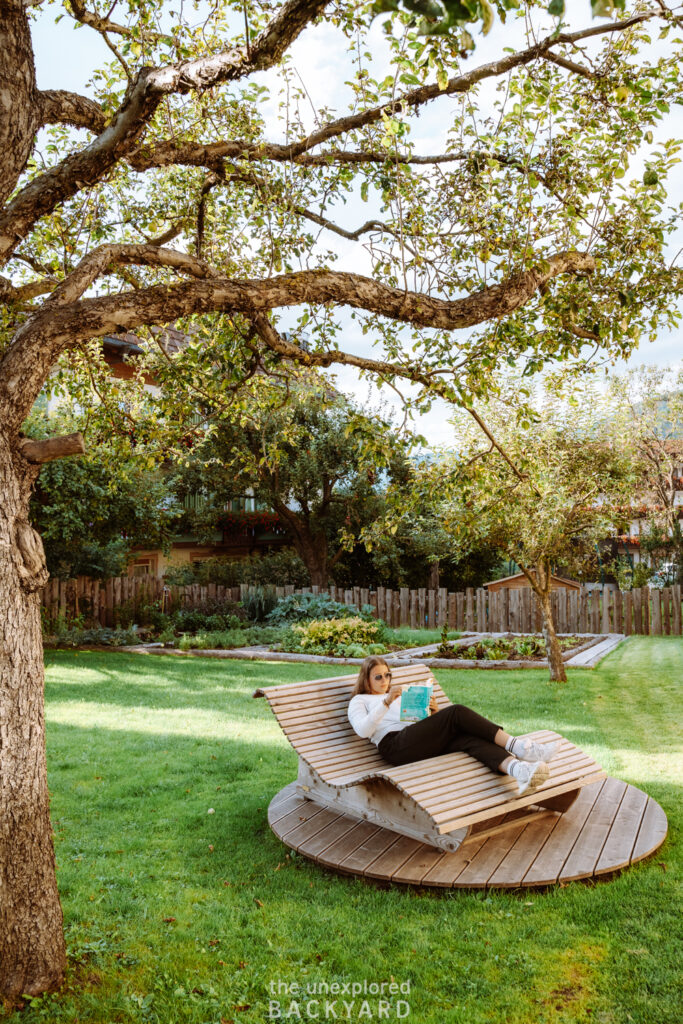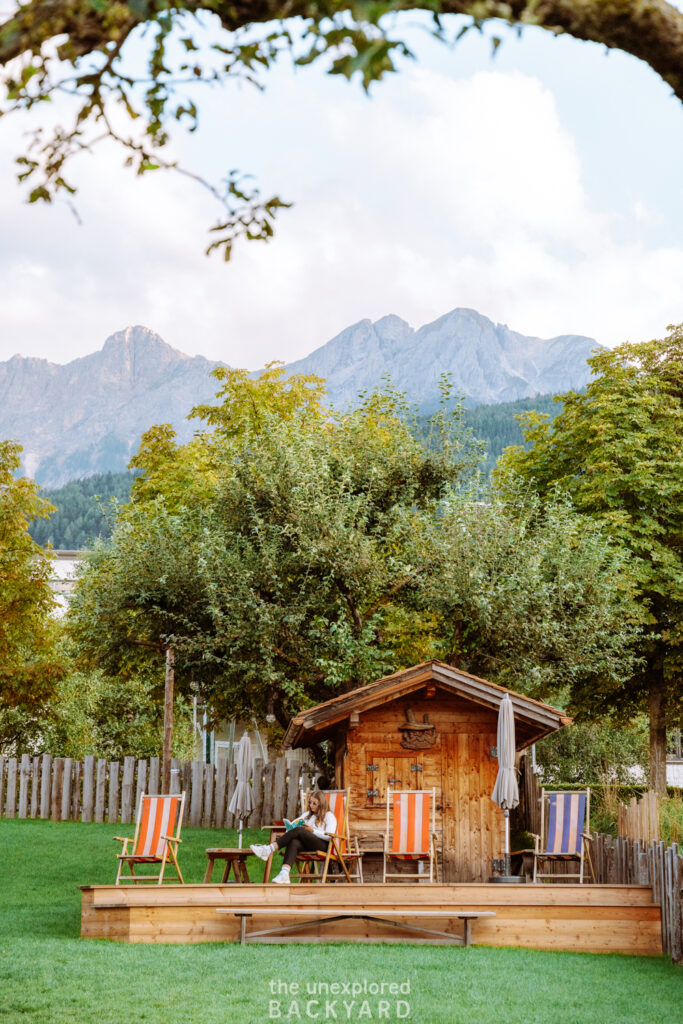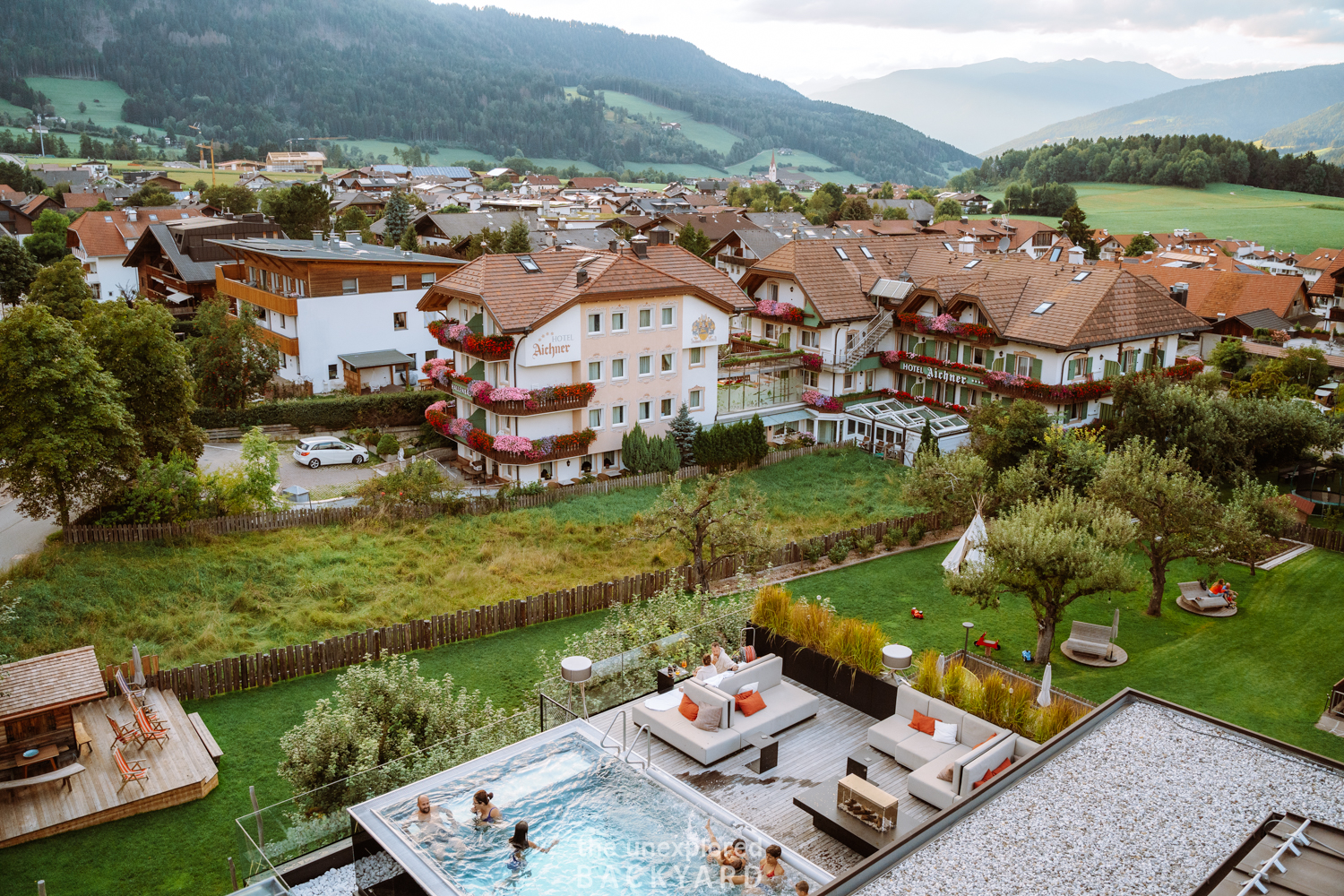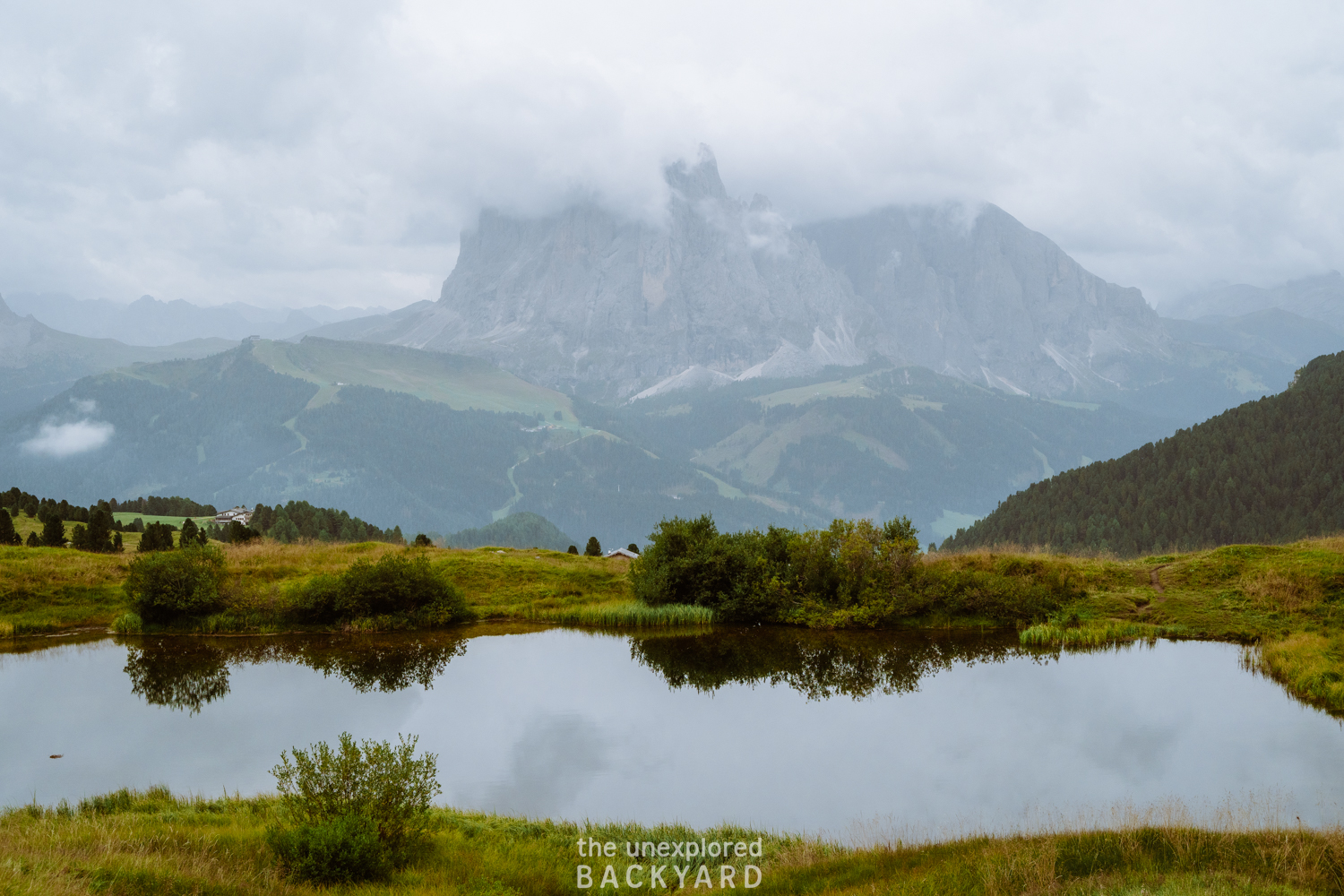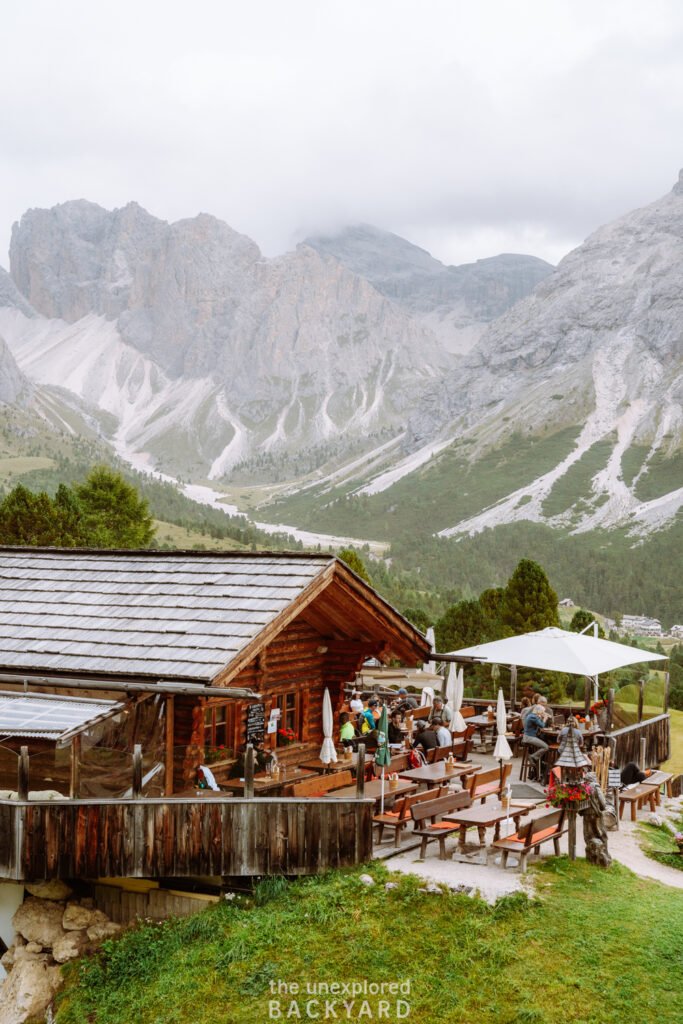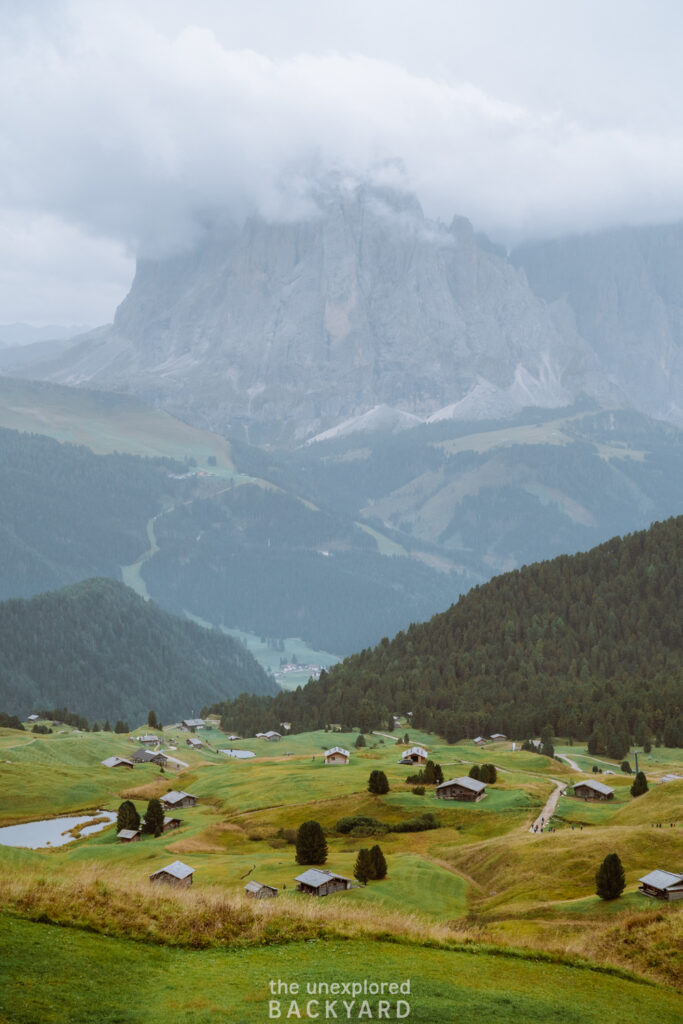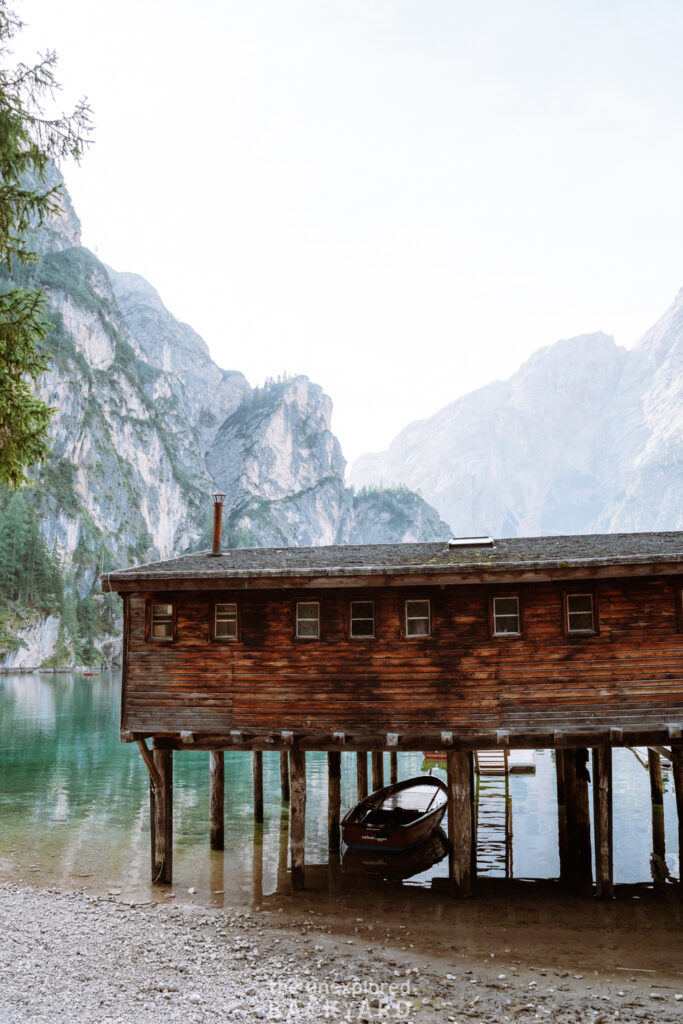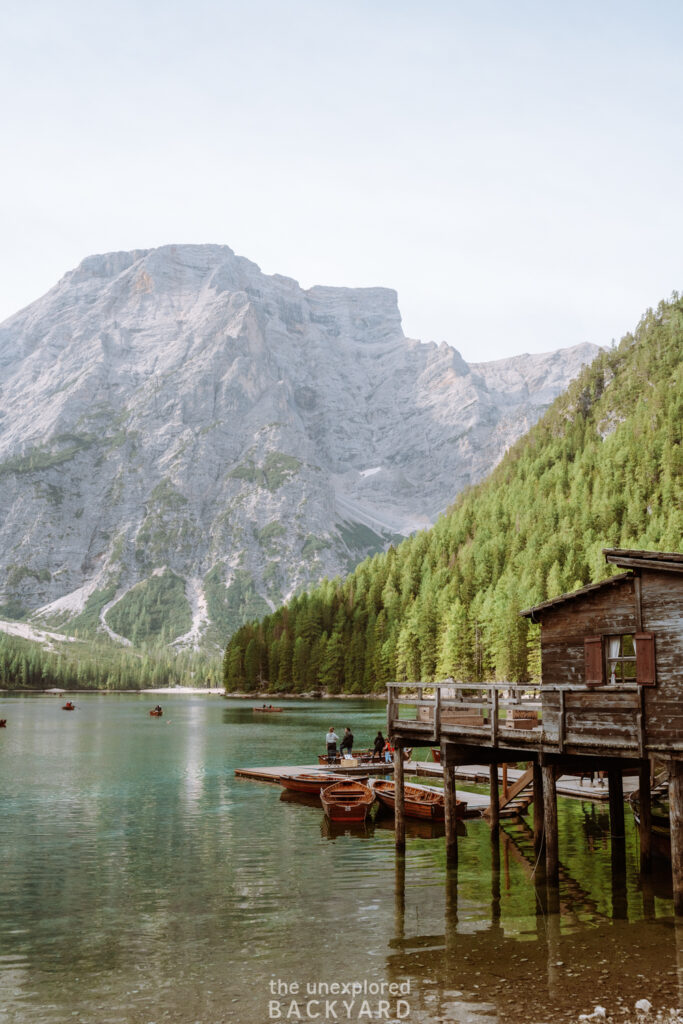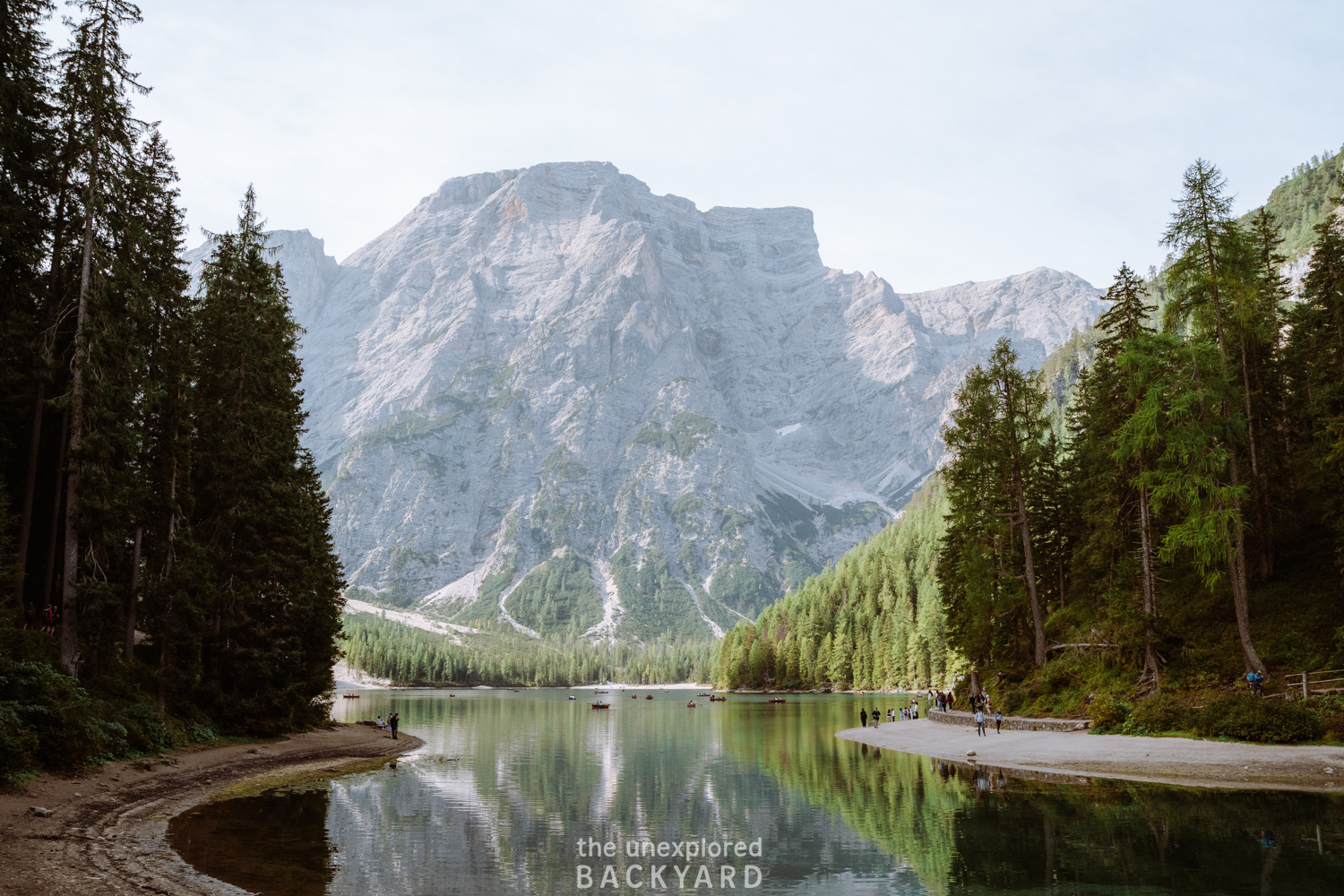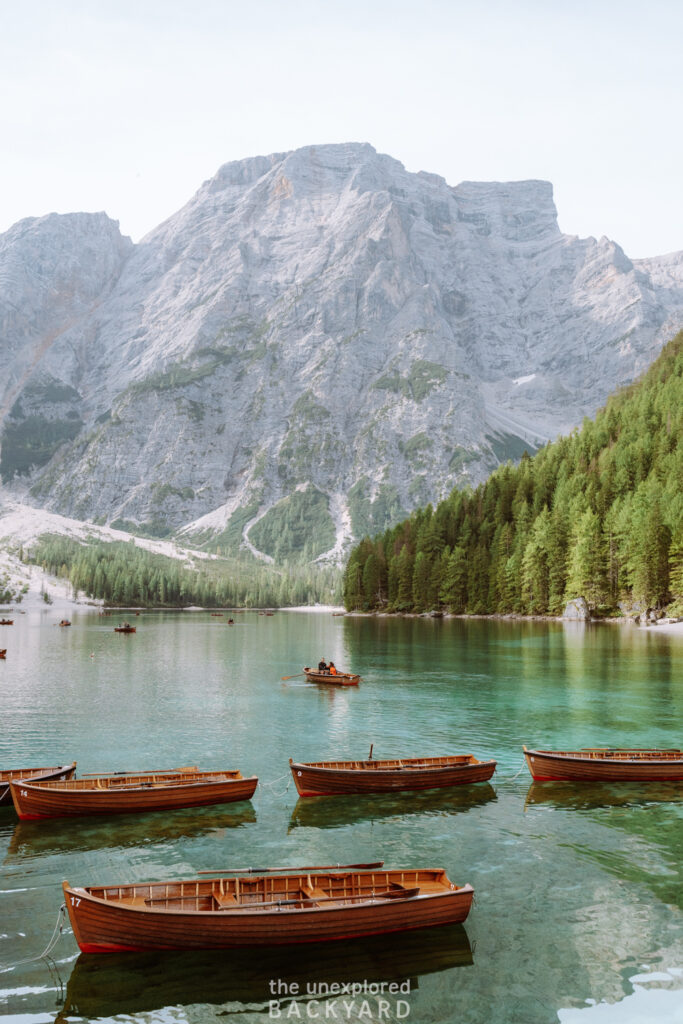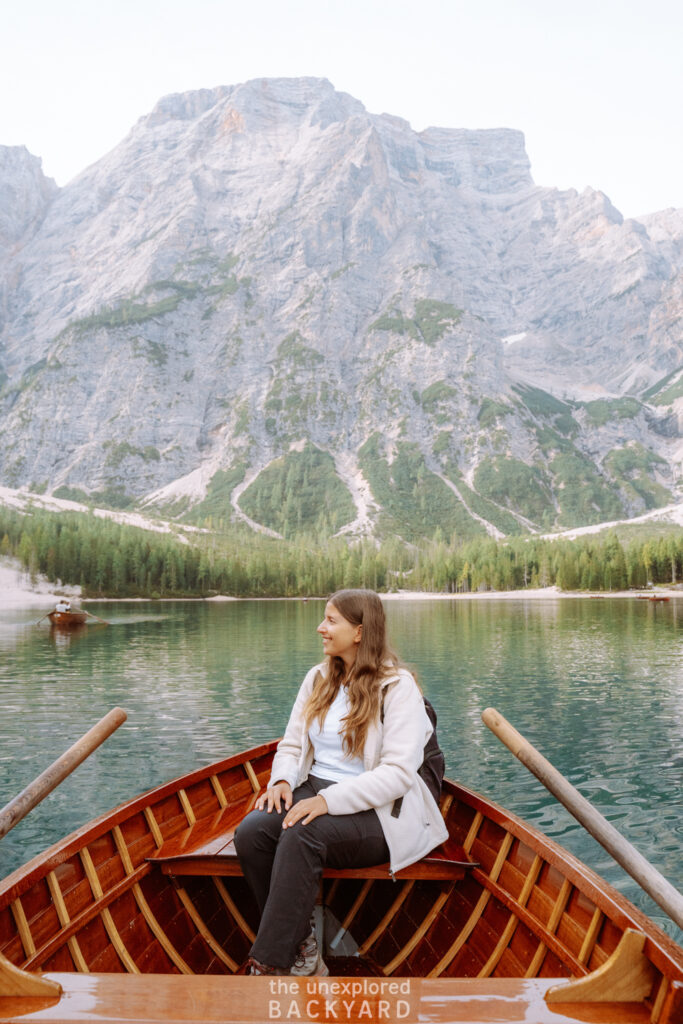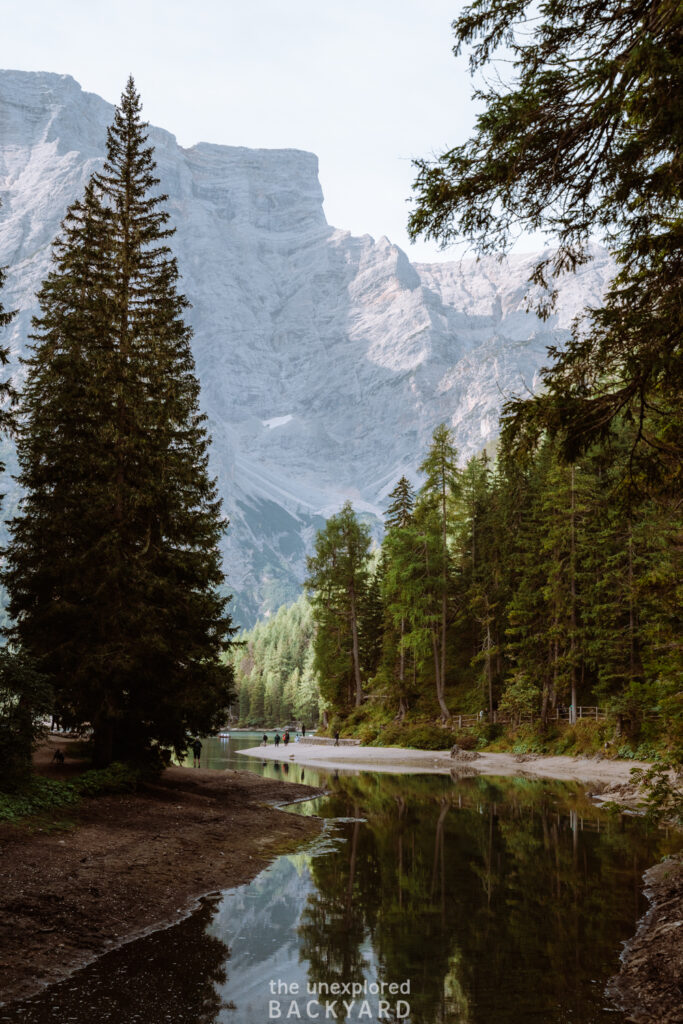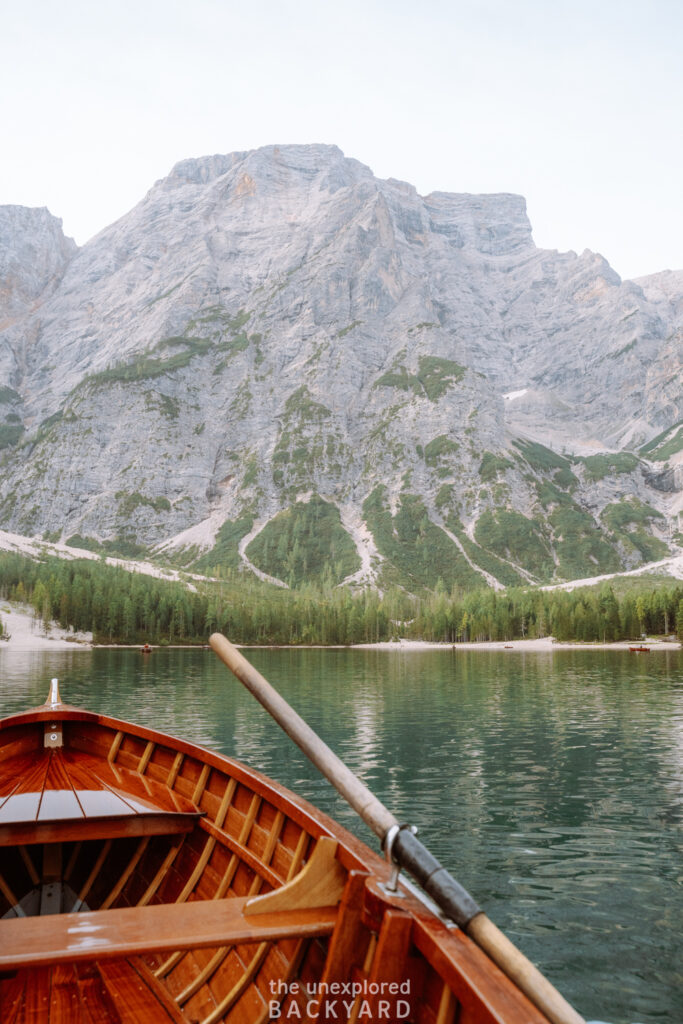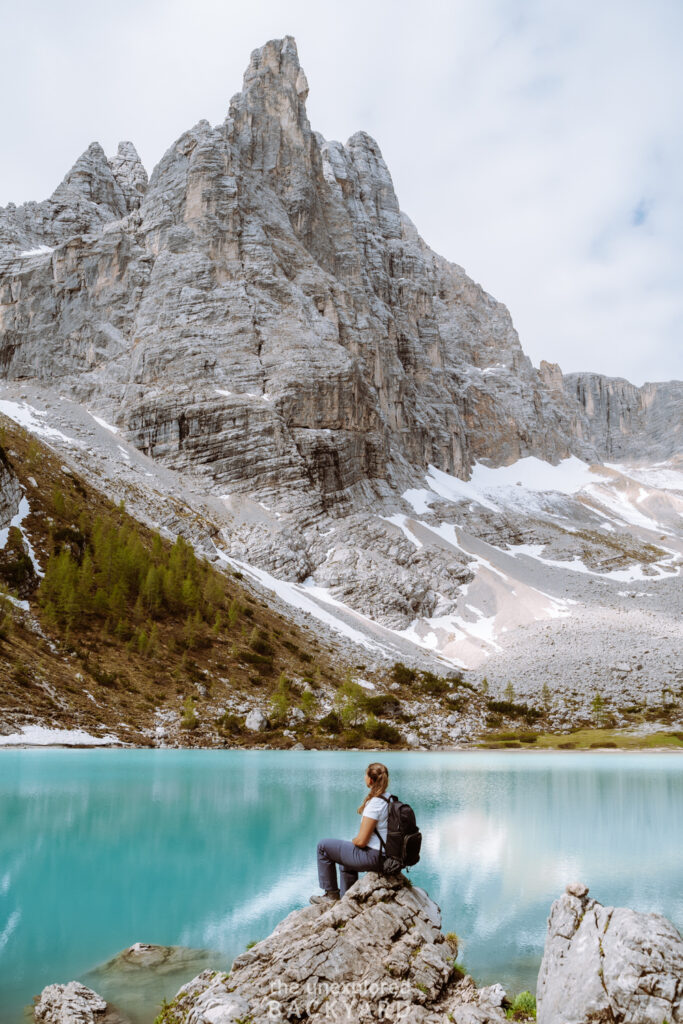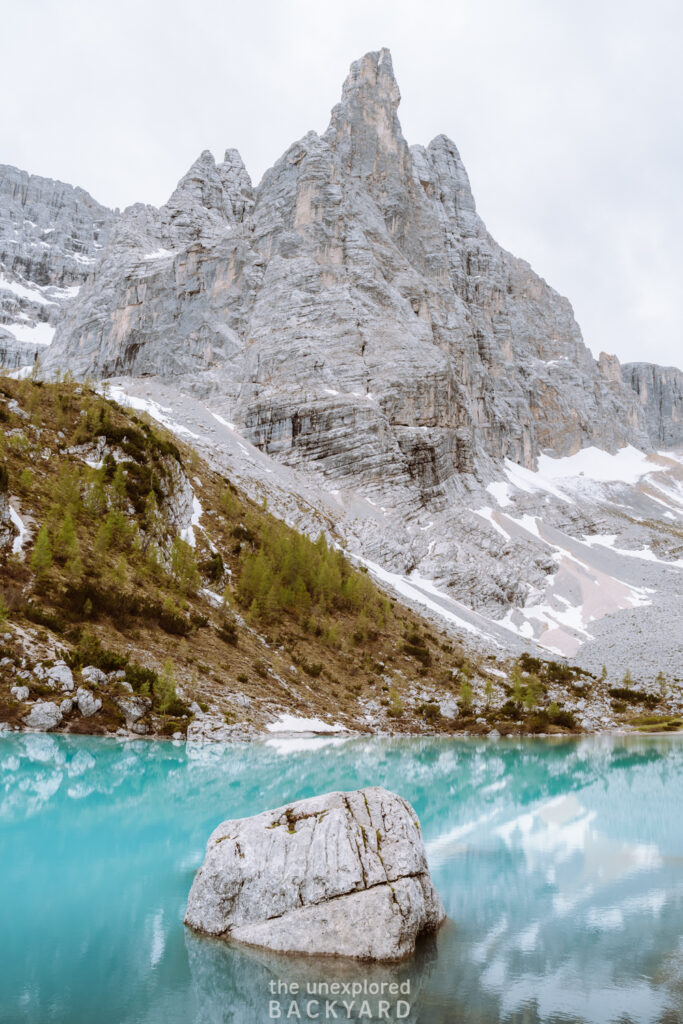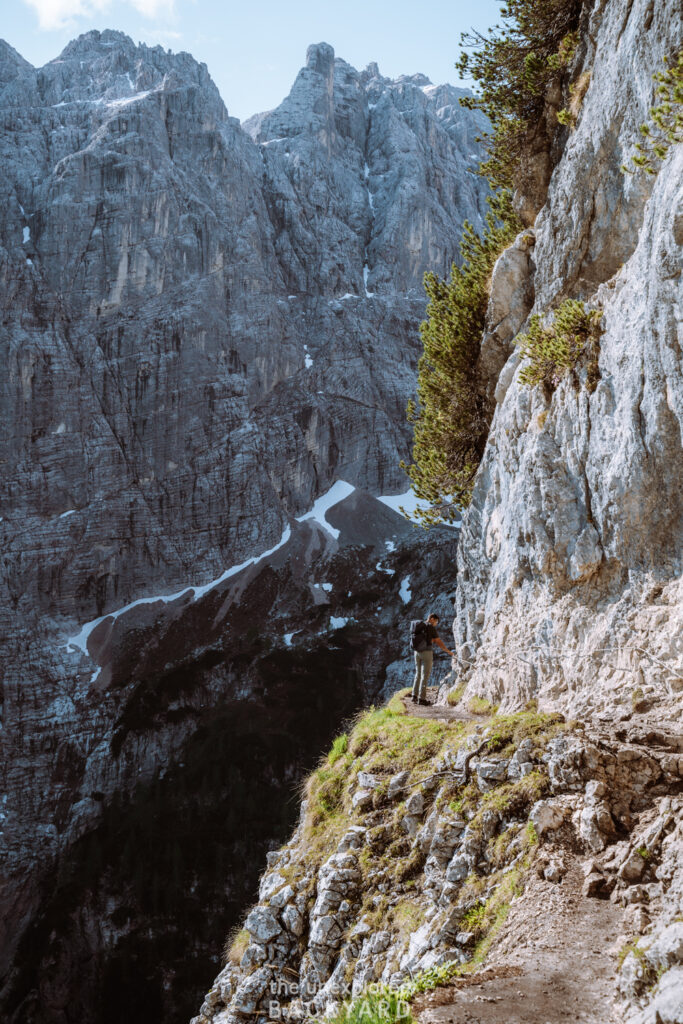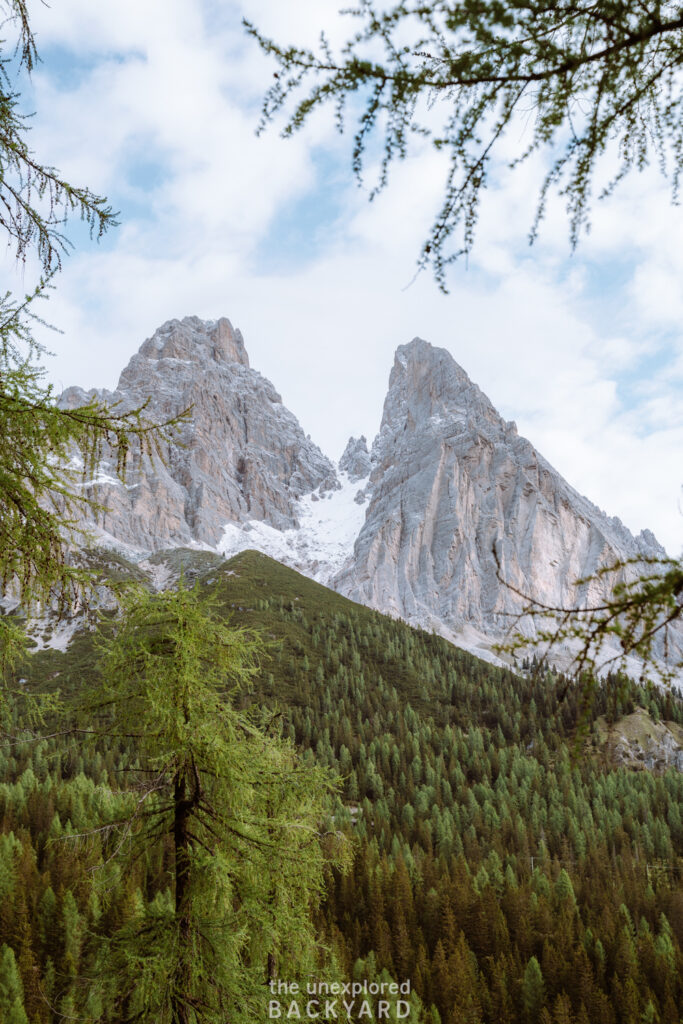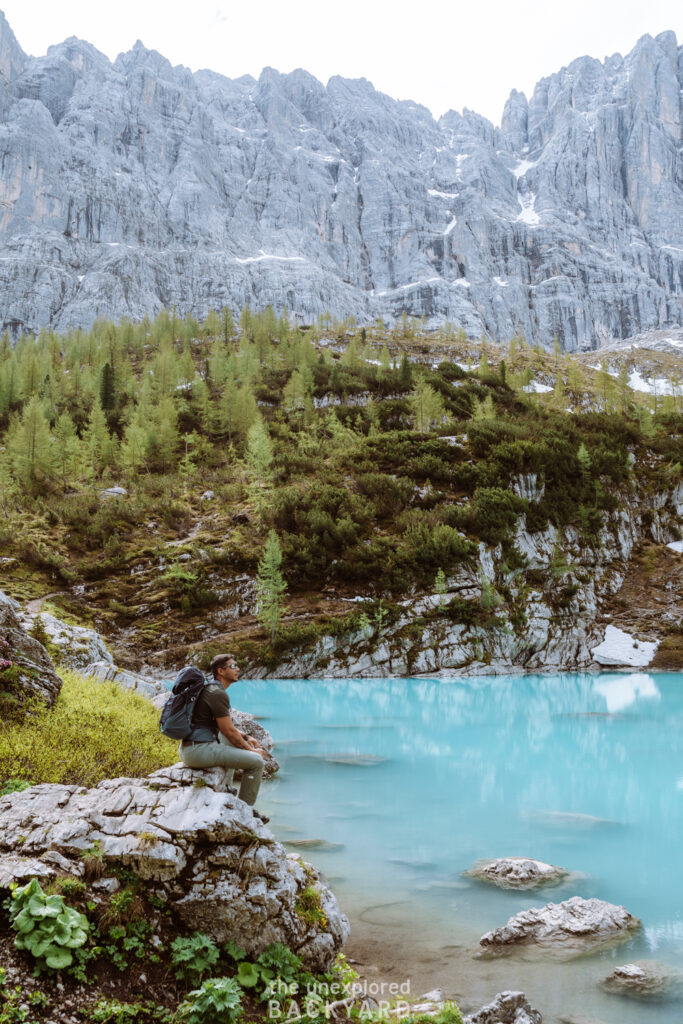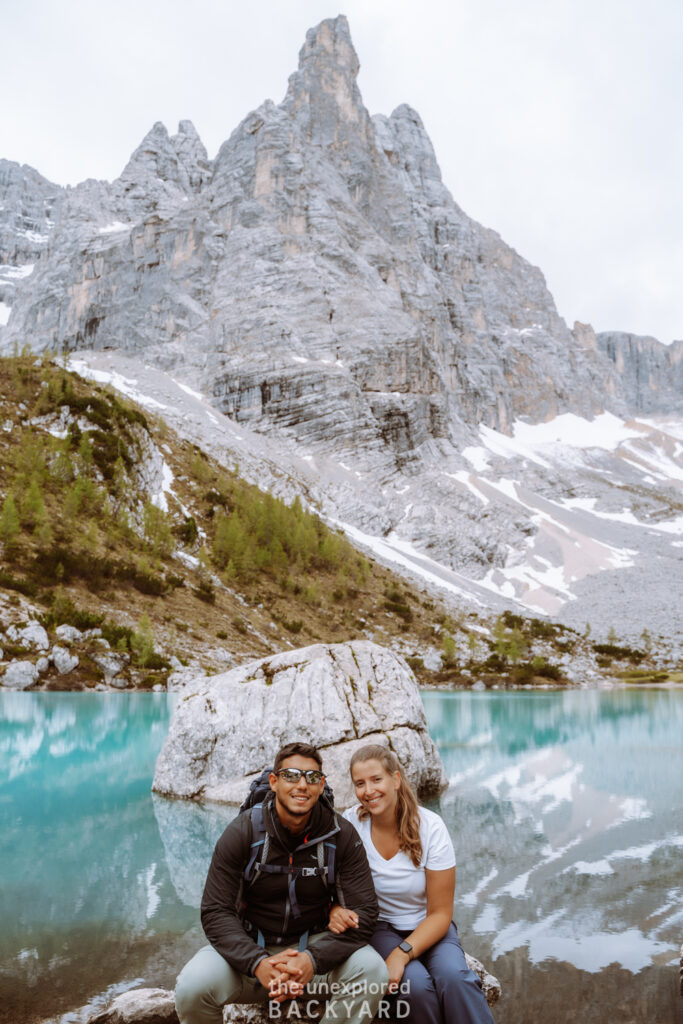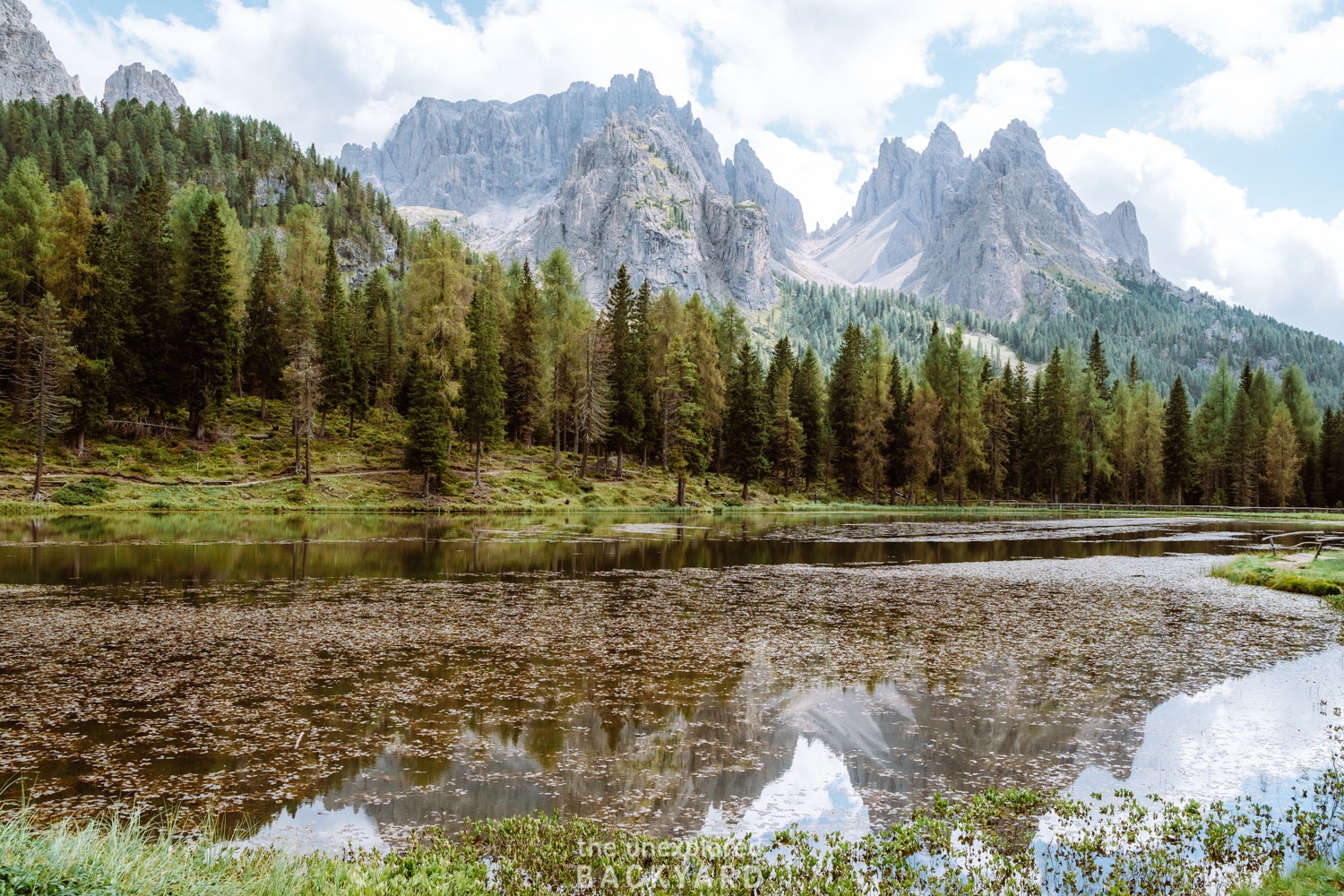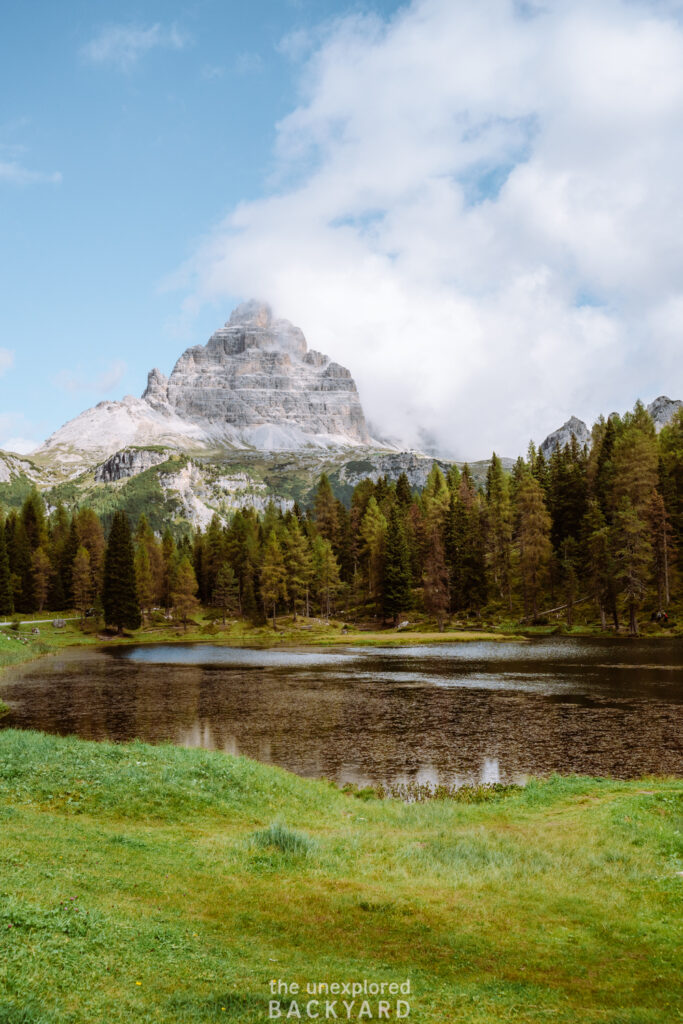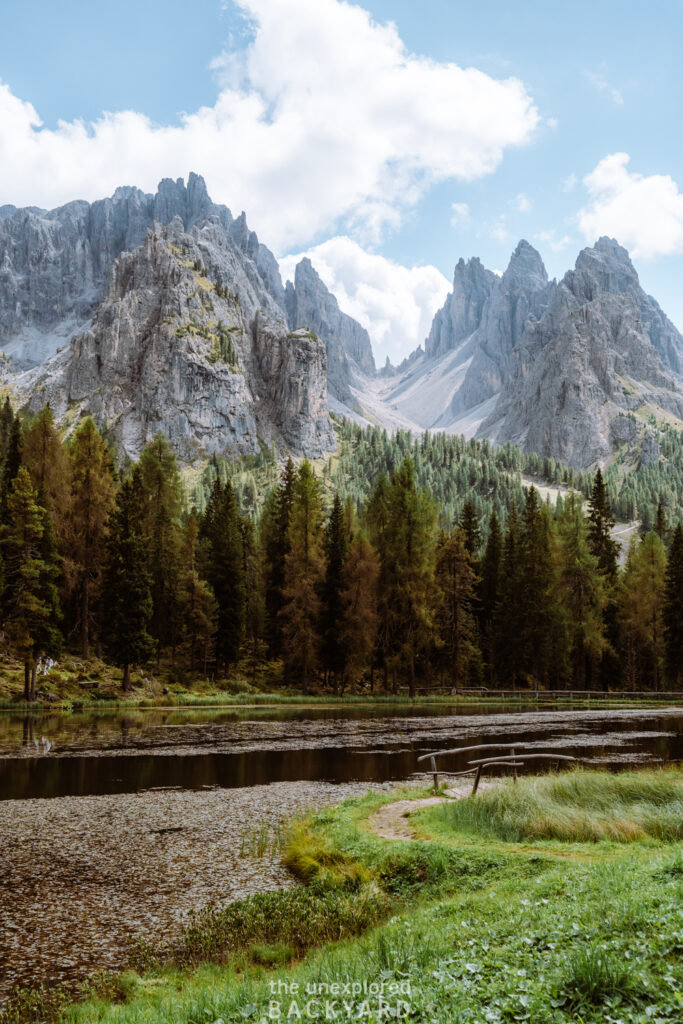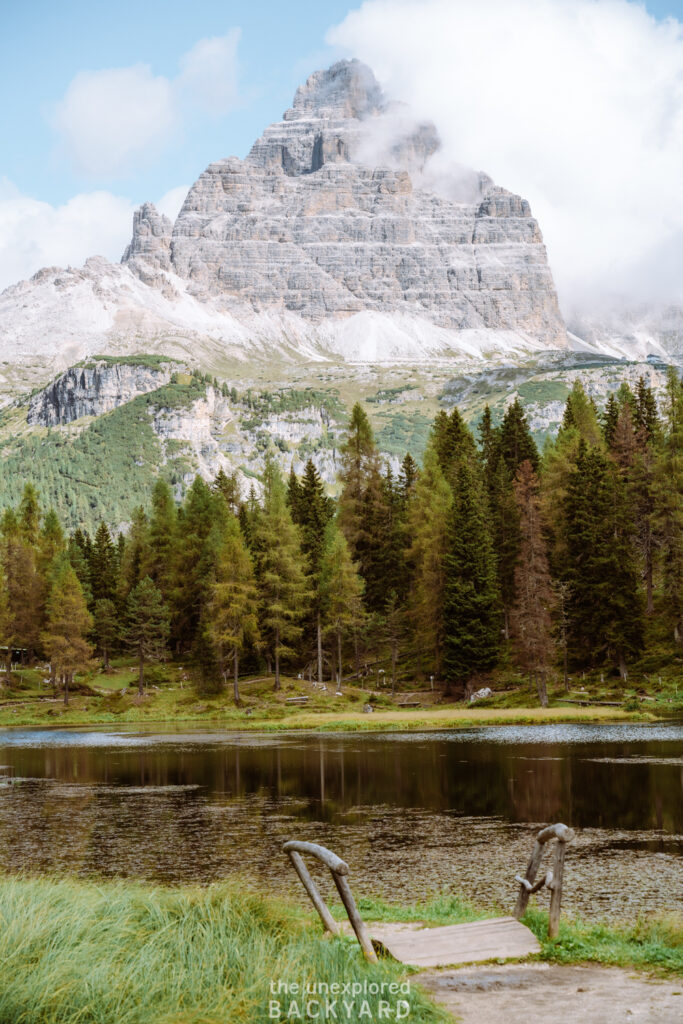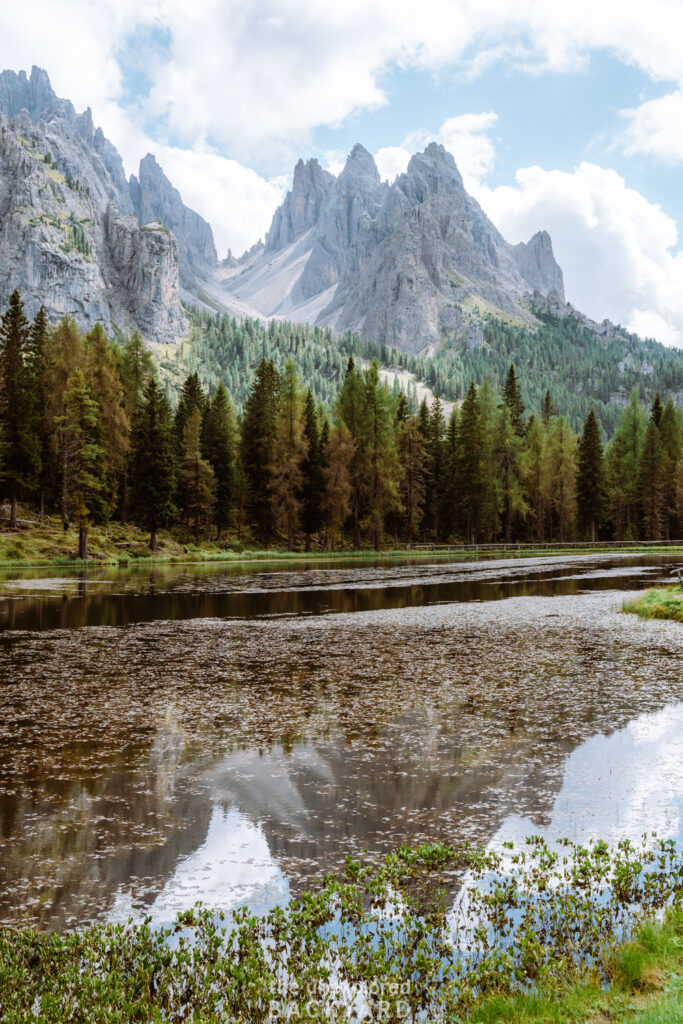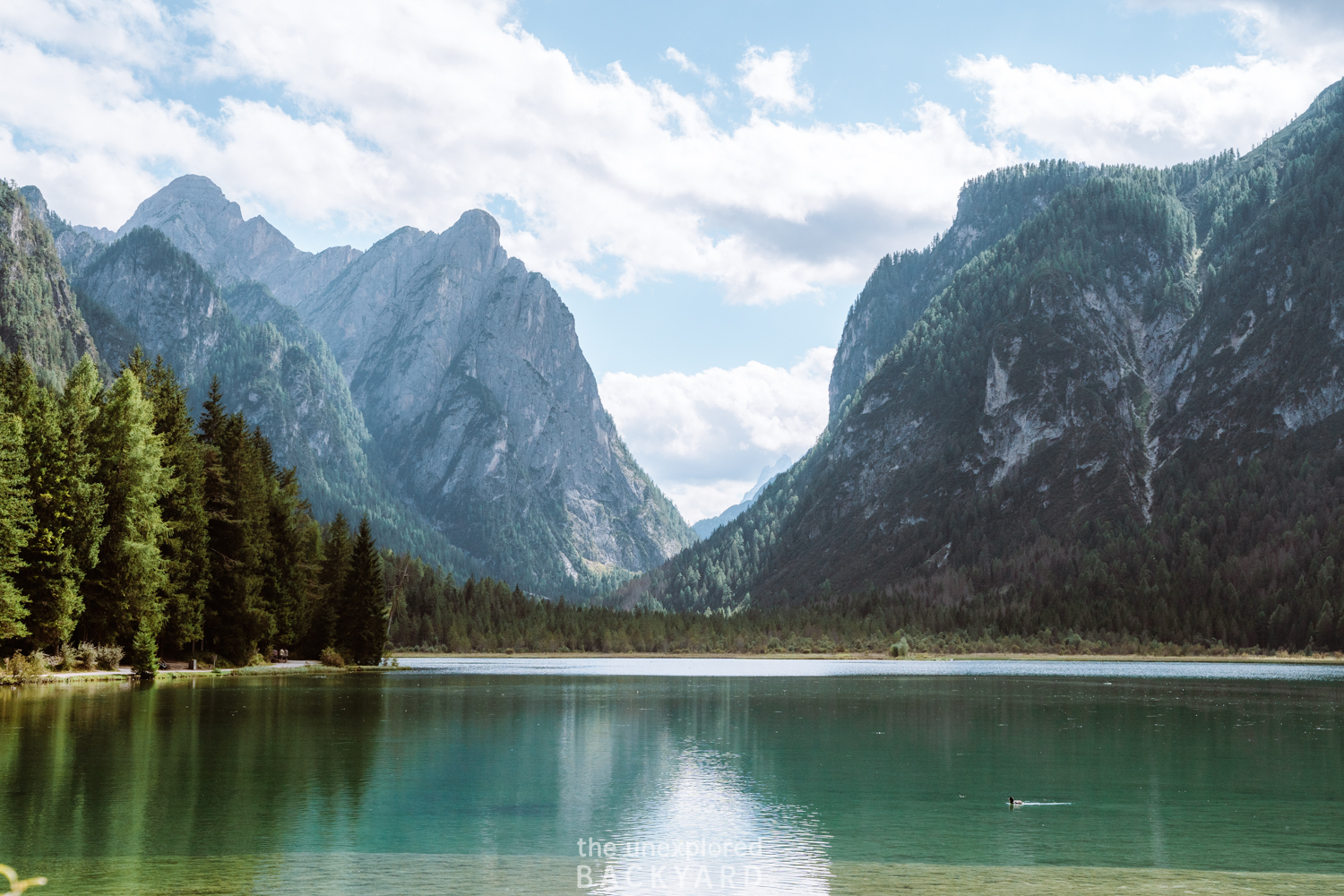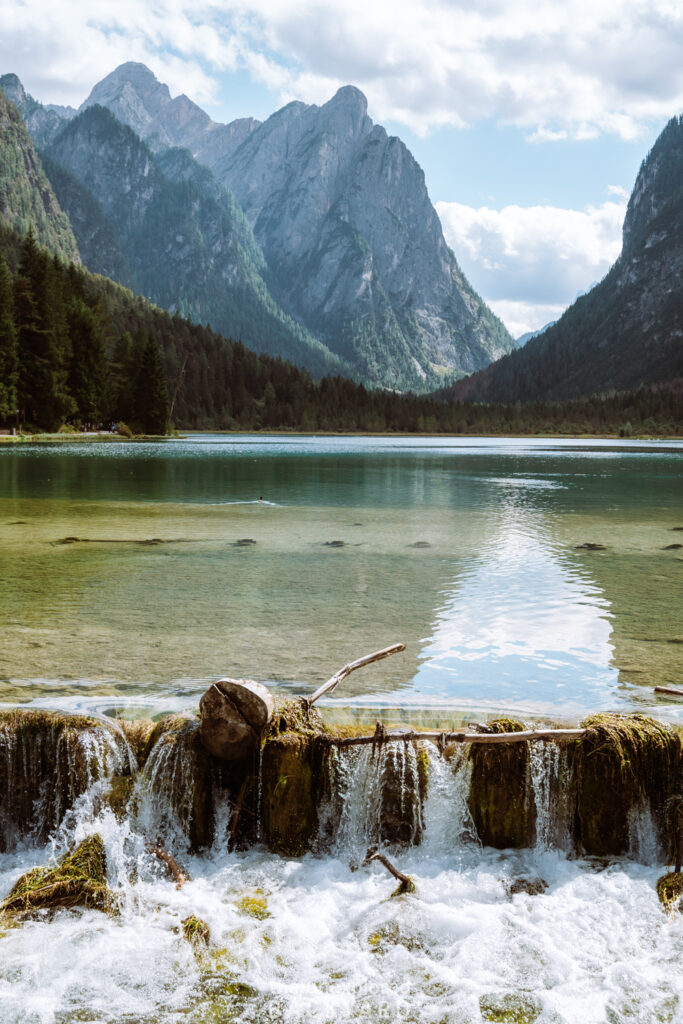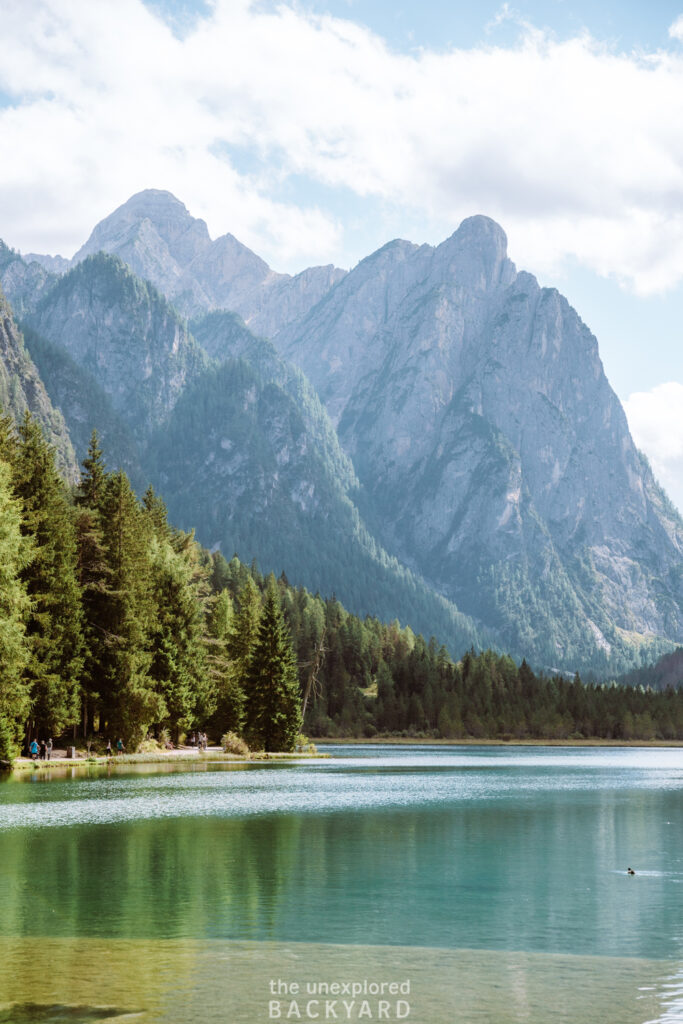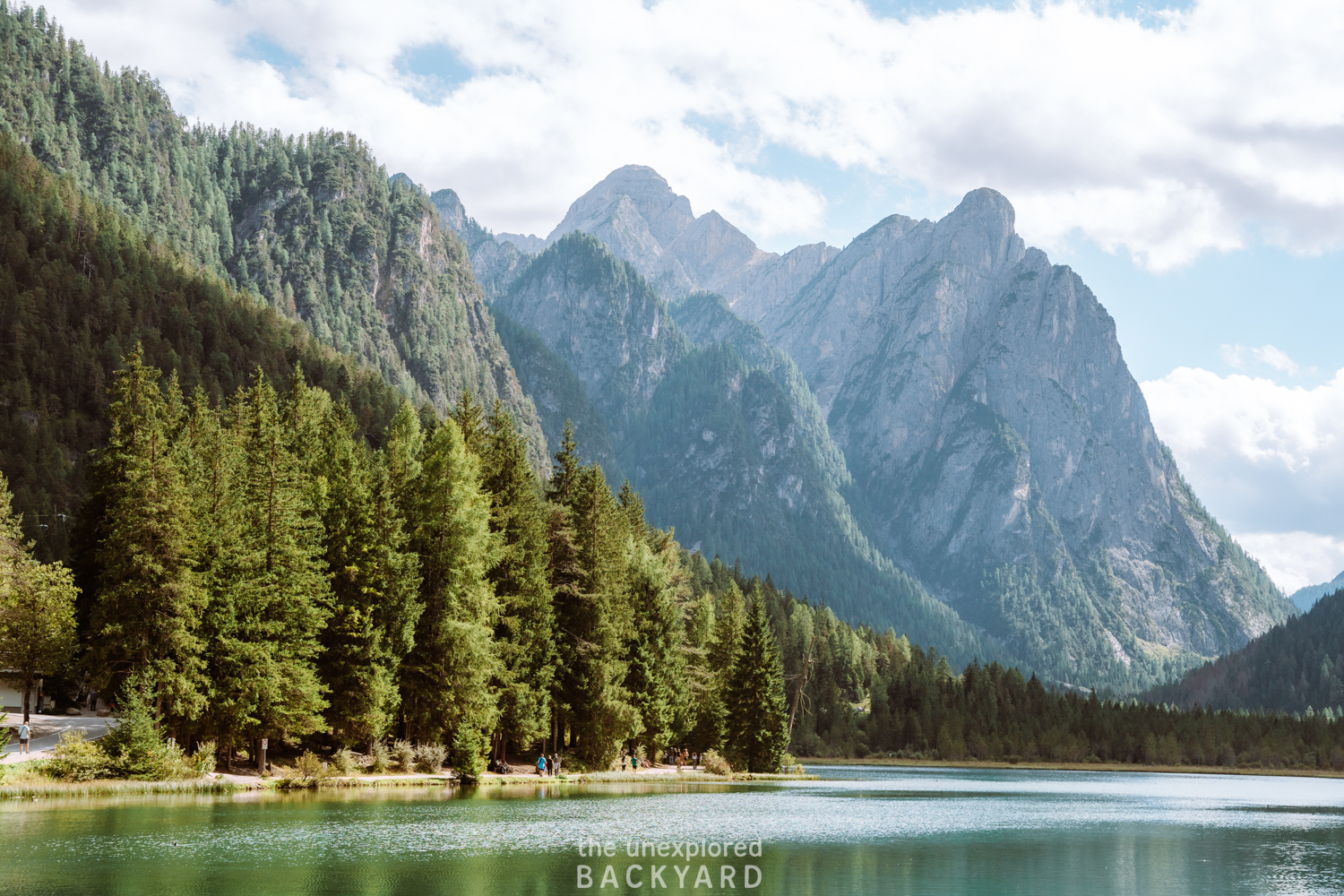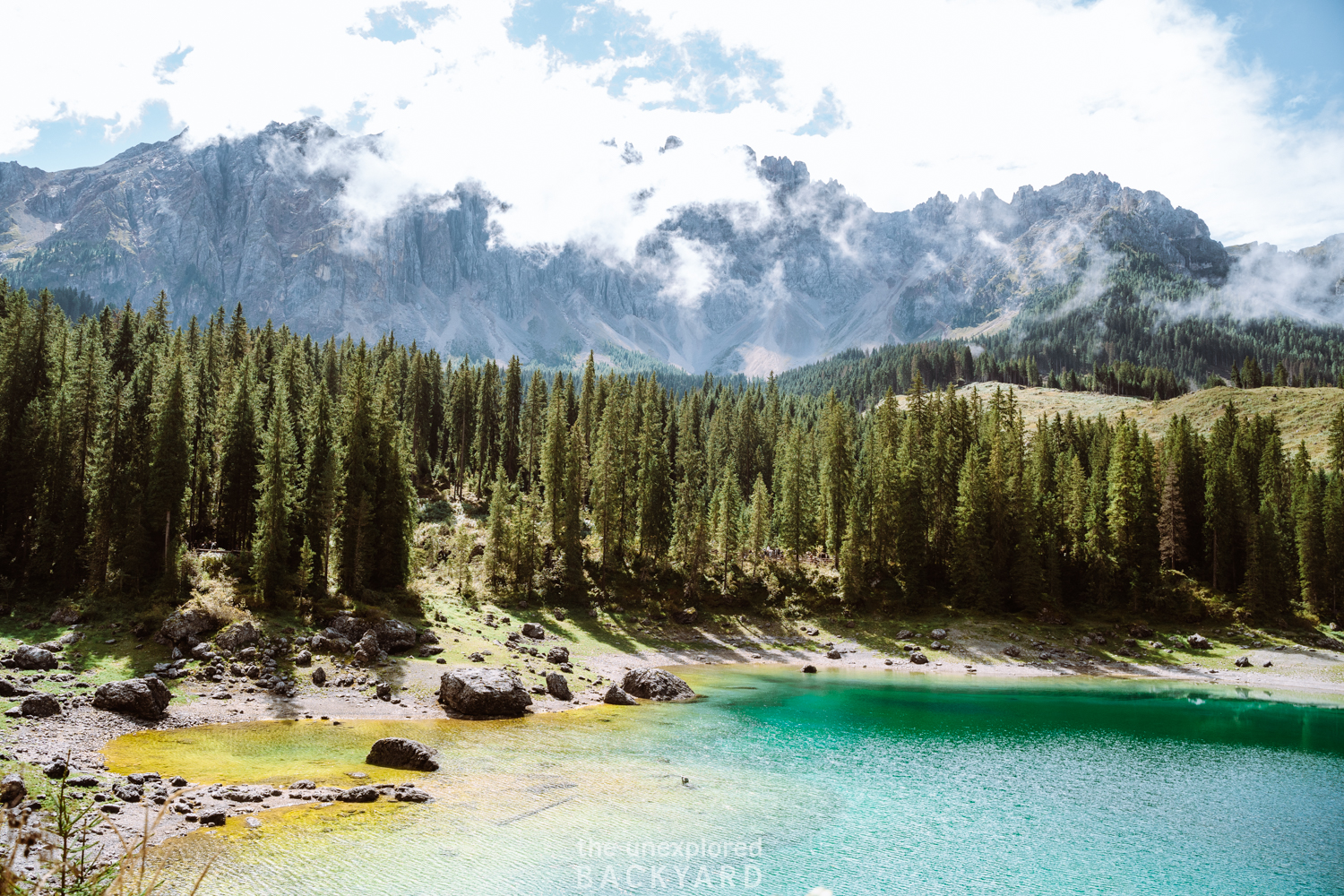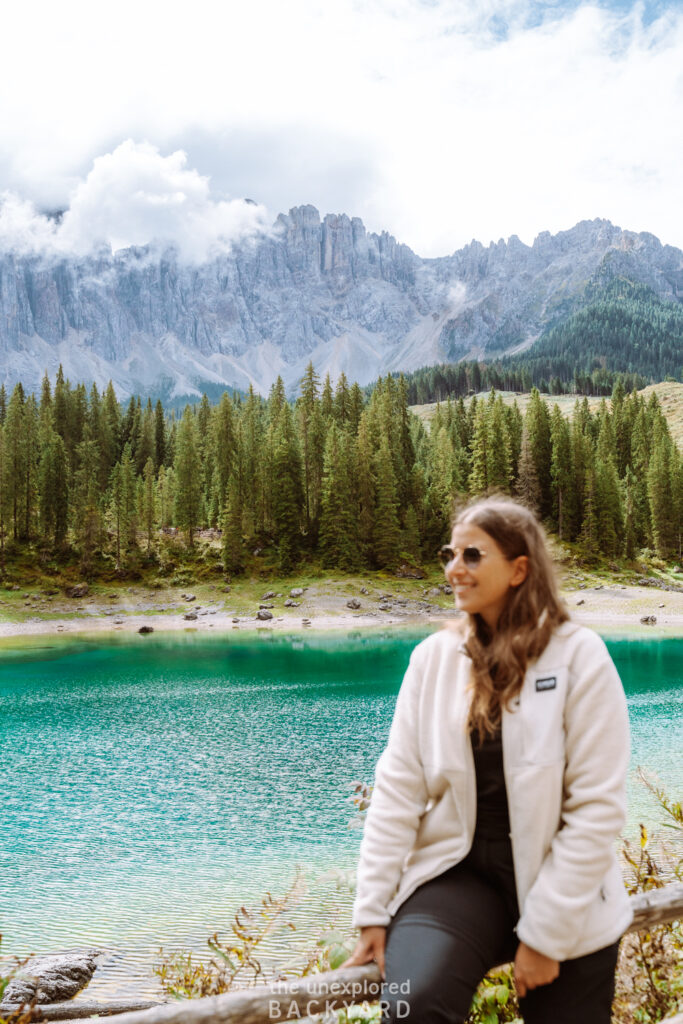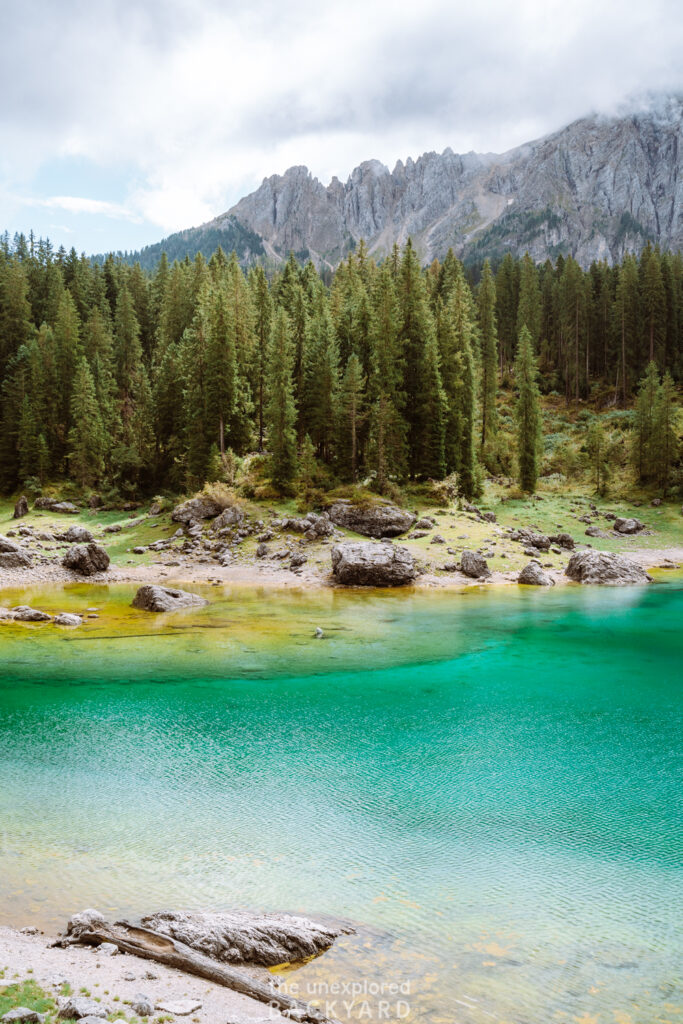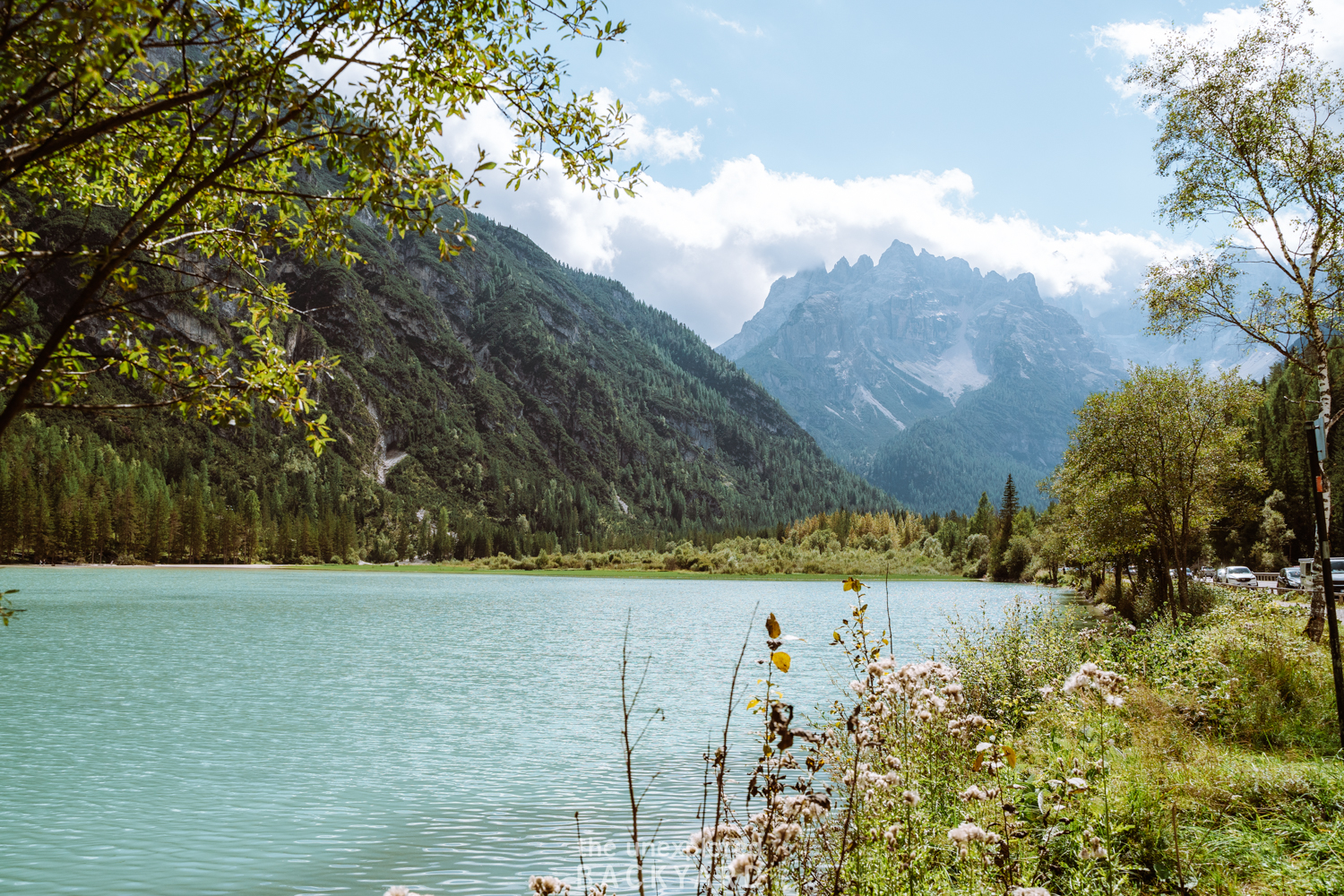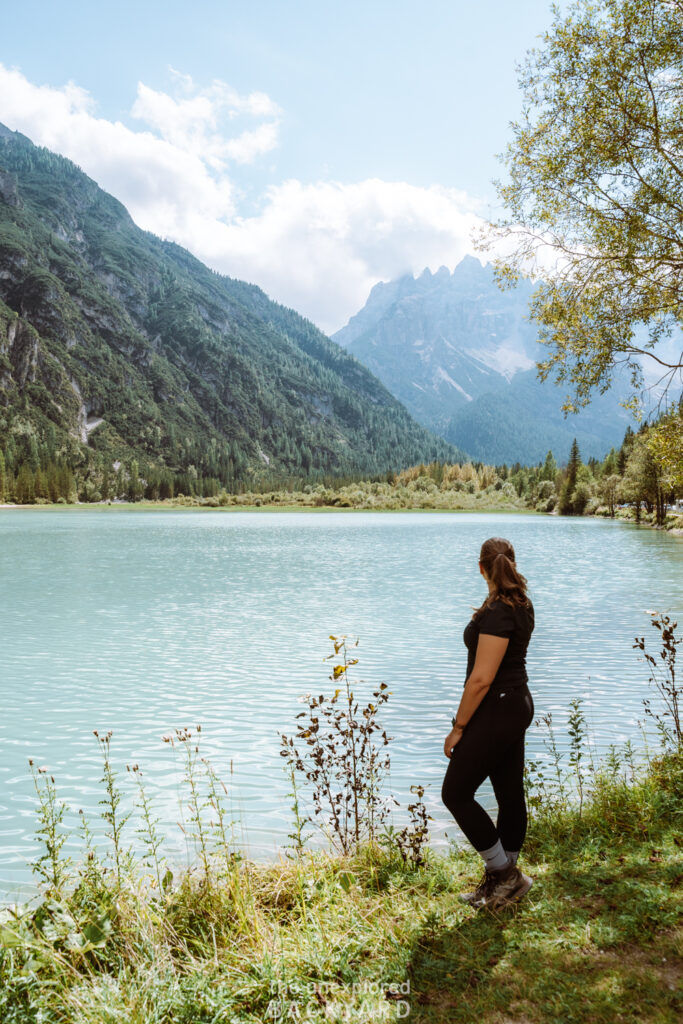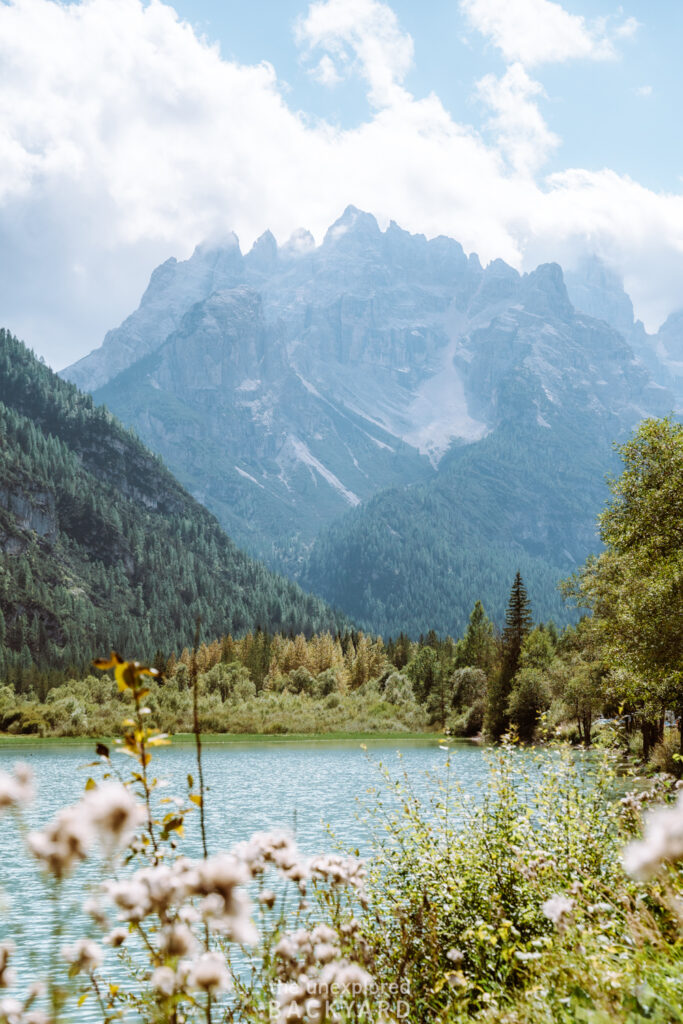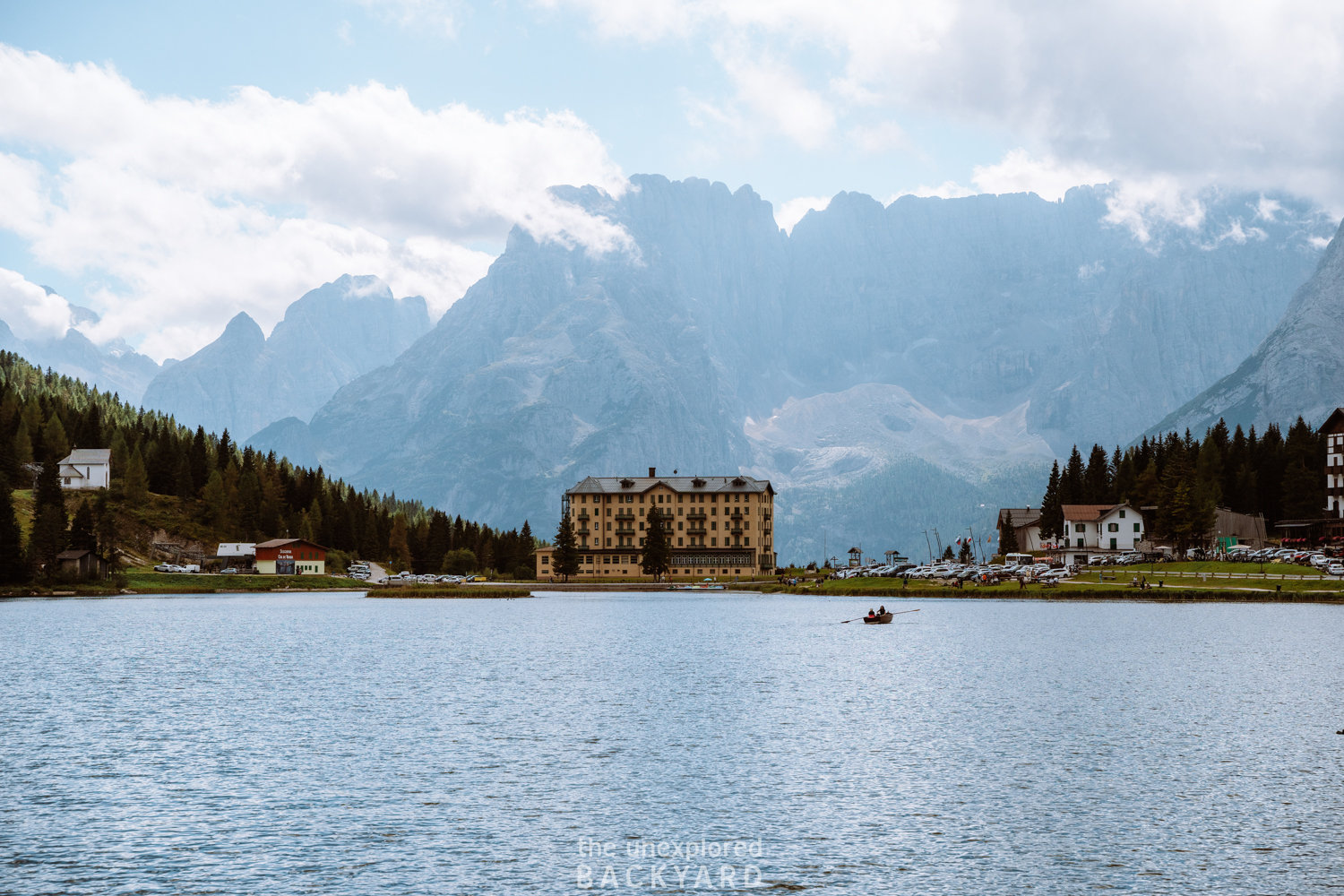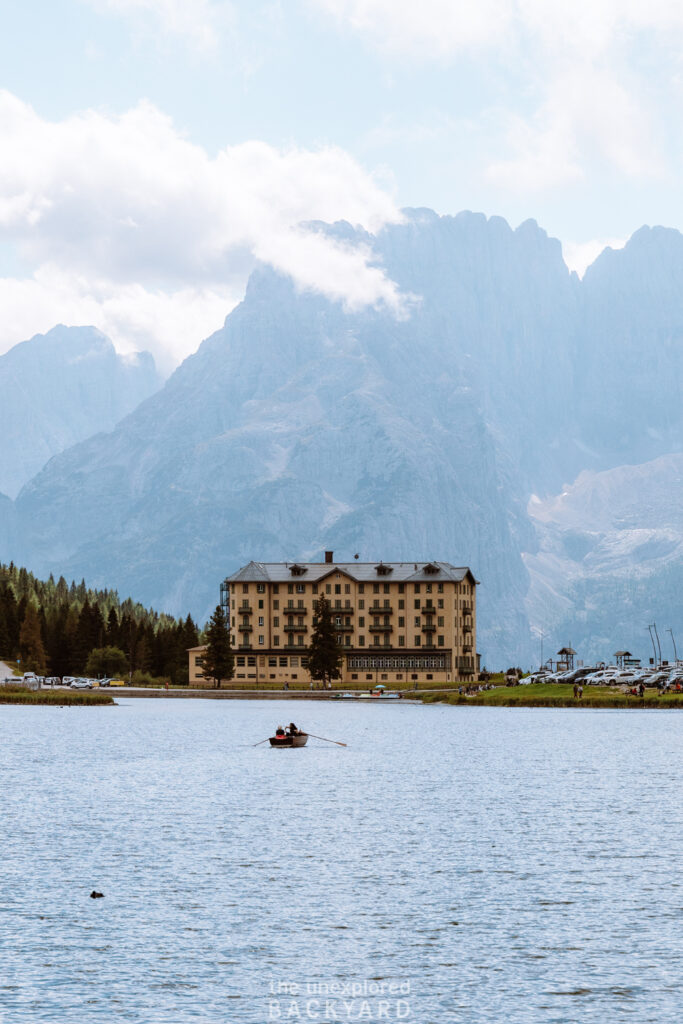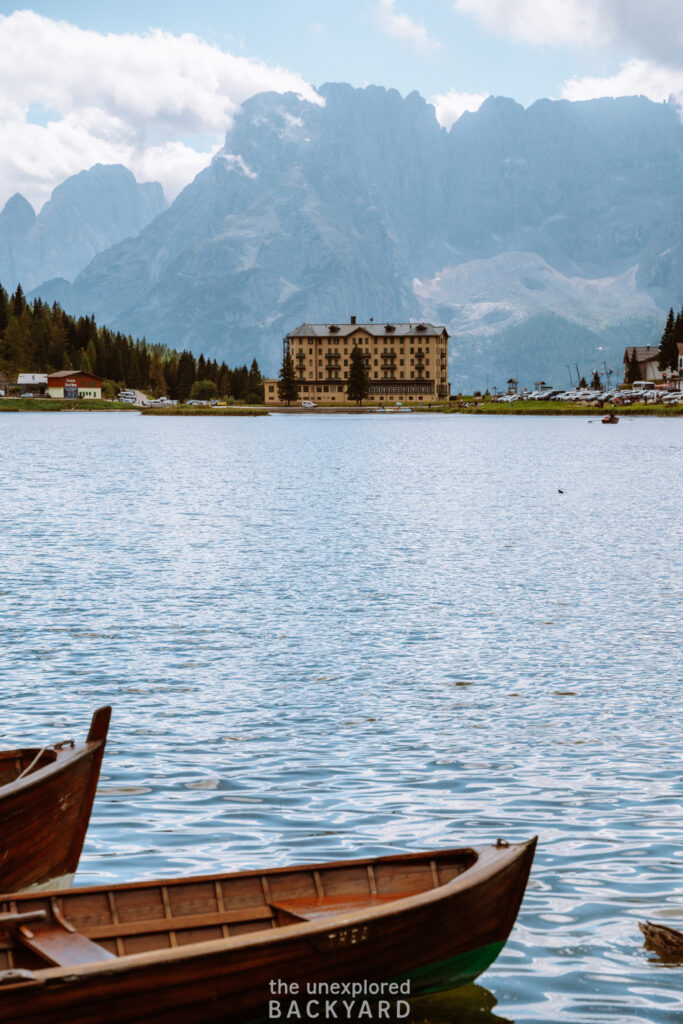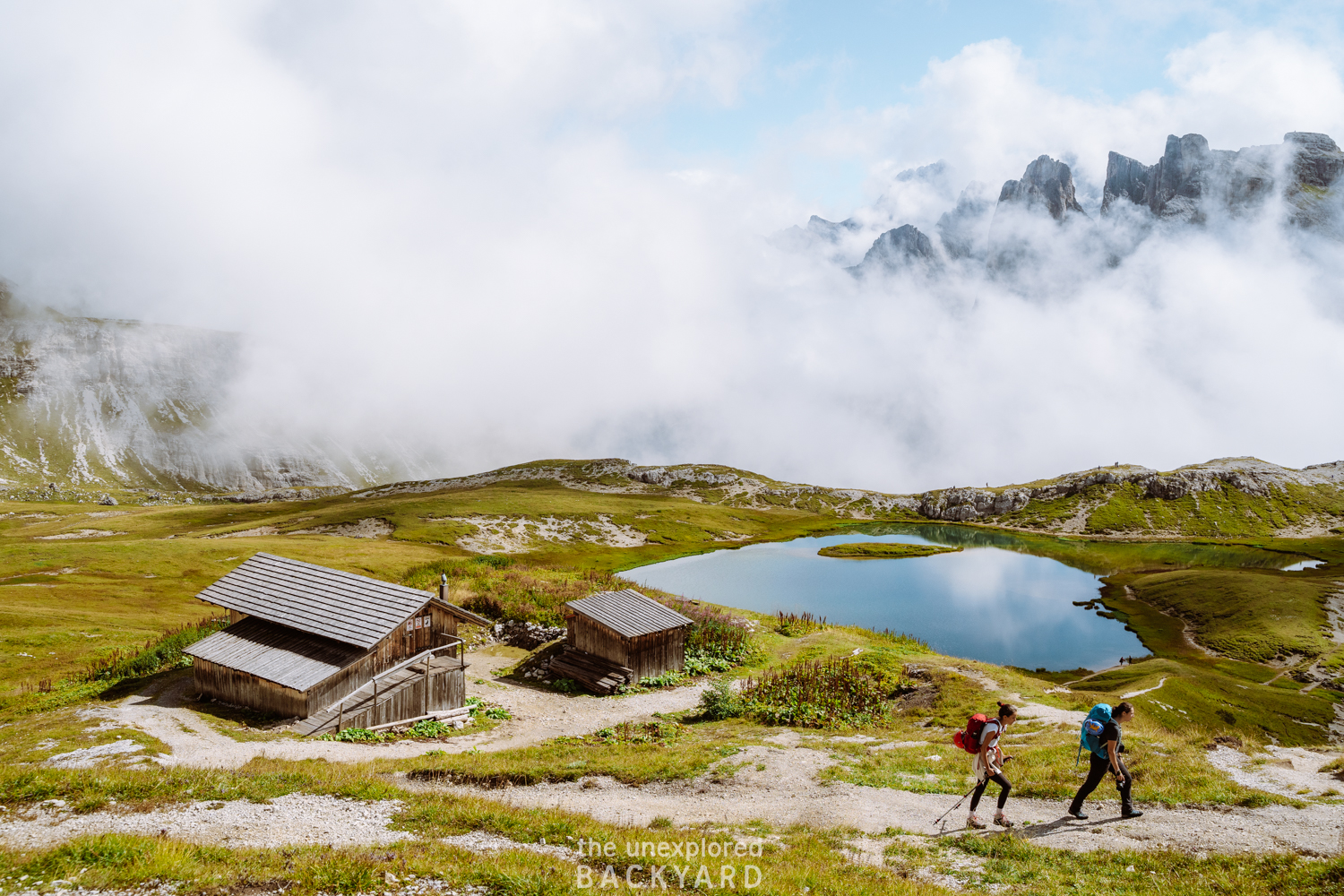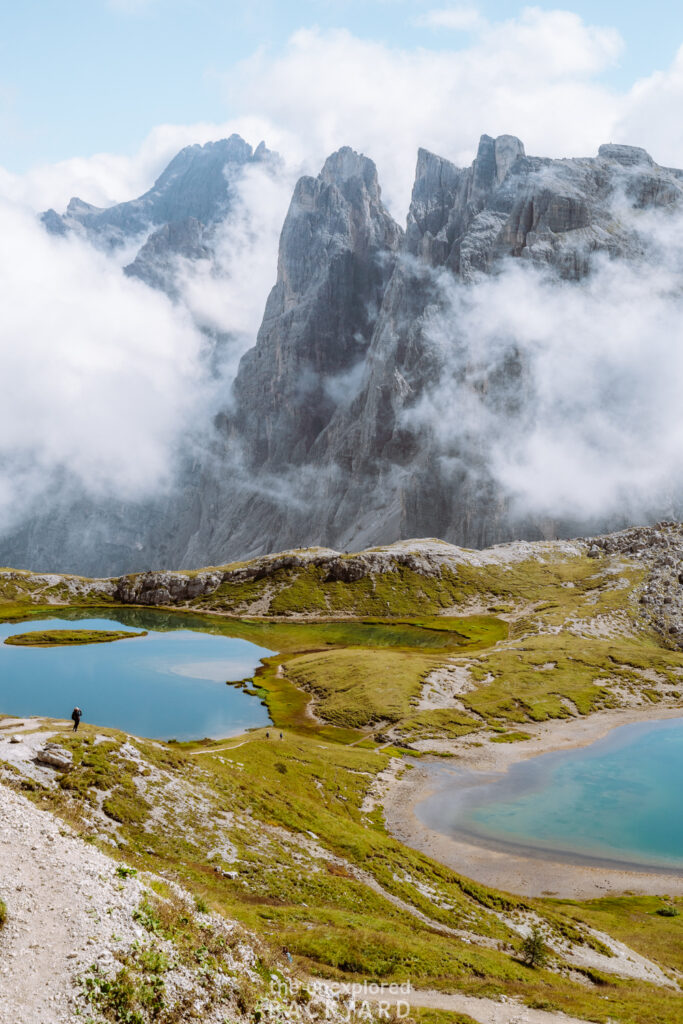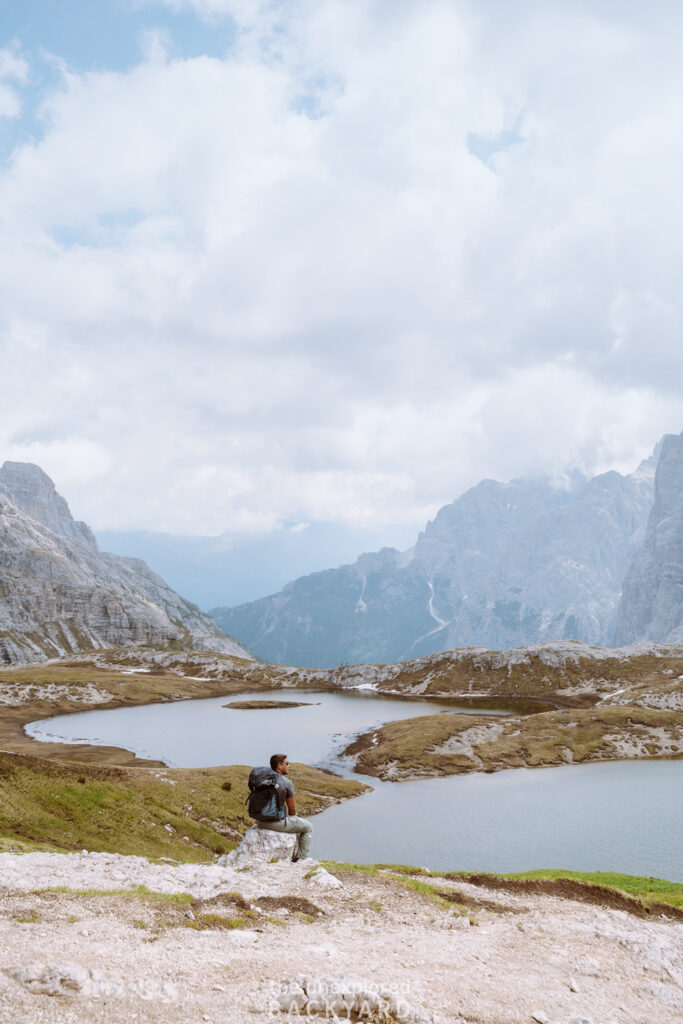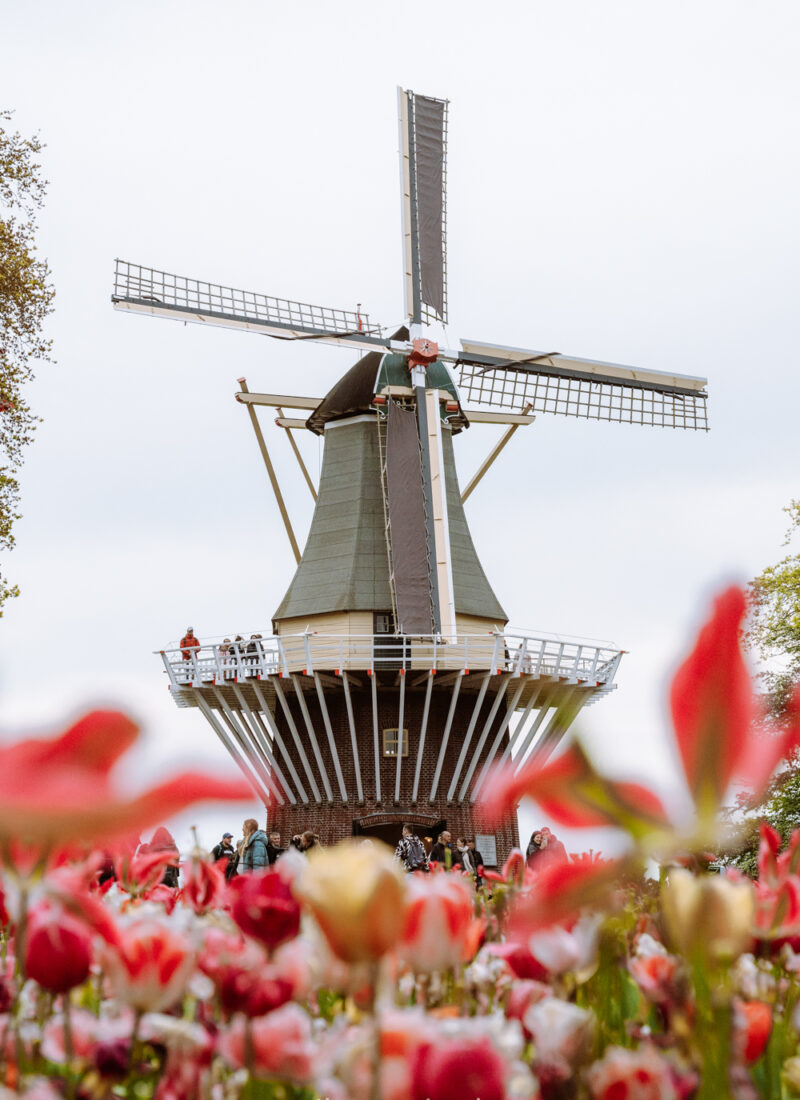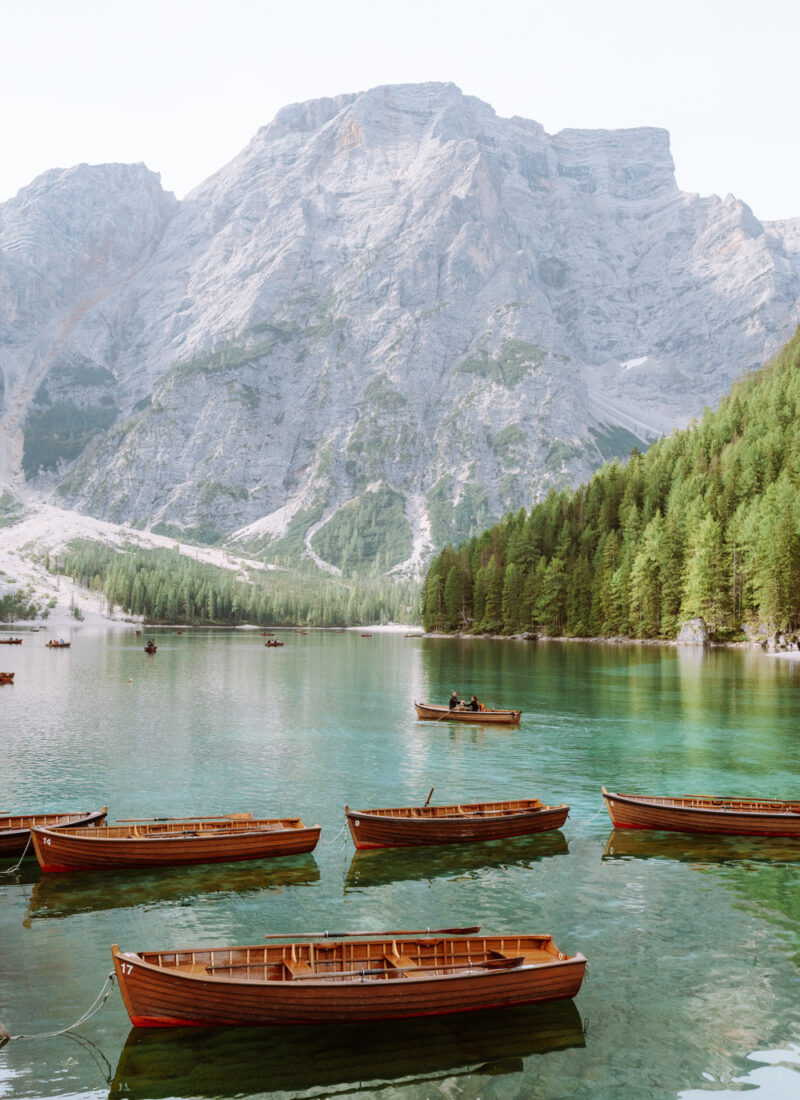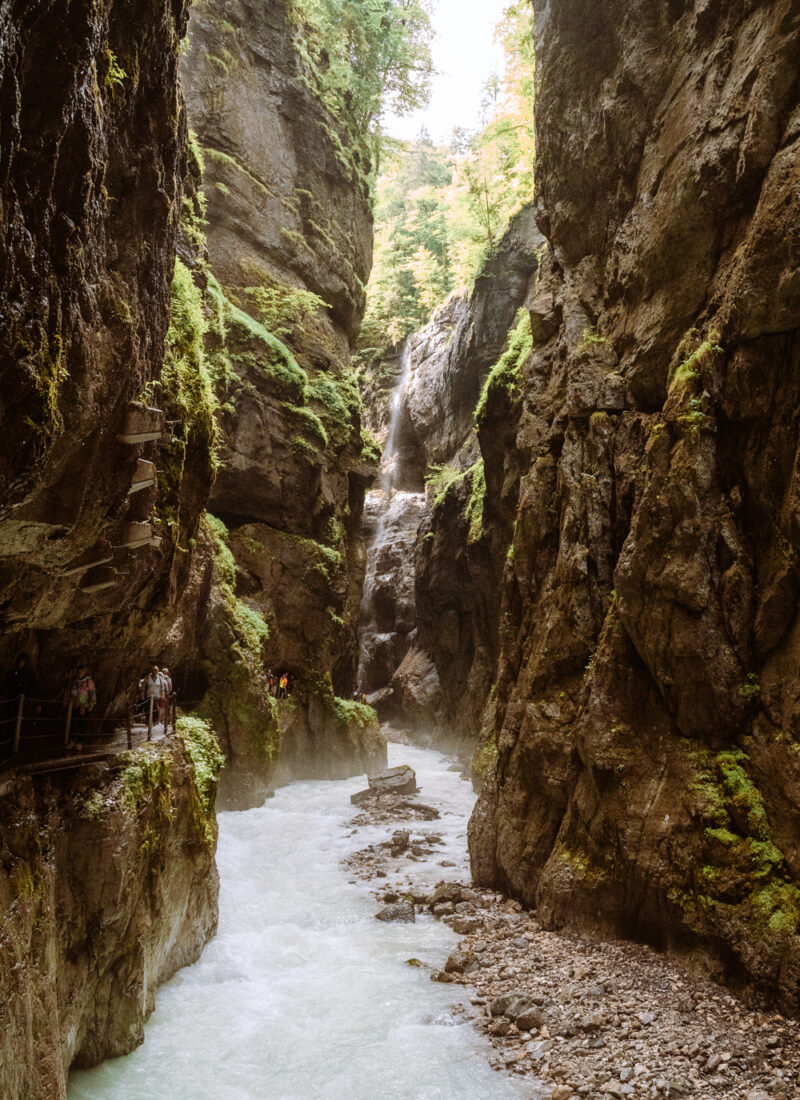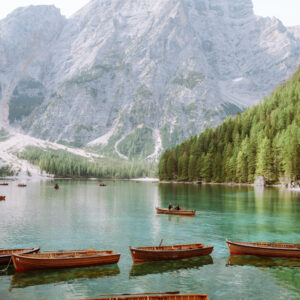This post may contain affiliate links. By purchasing through my links you can help support me at no additional cost to you, thank you!
Planning a trip to the Dolomites? In this guide, I’ll show you 8 must-see lakes in the Dolomites and how to visit each one!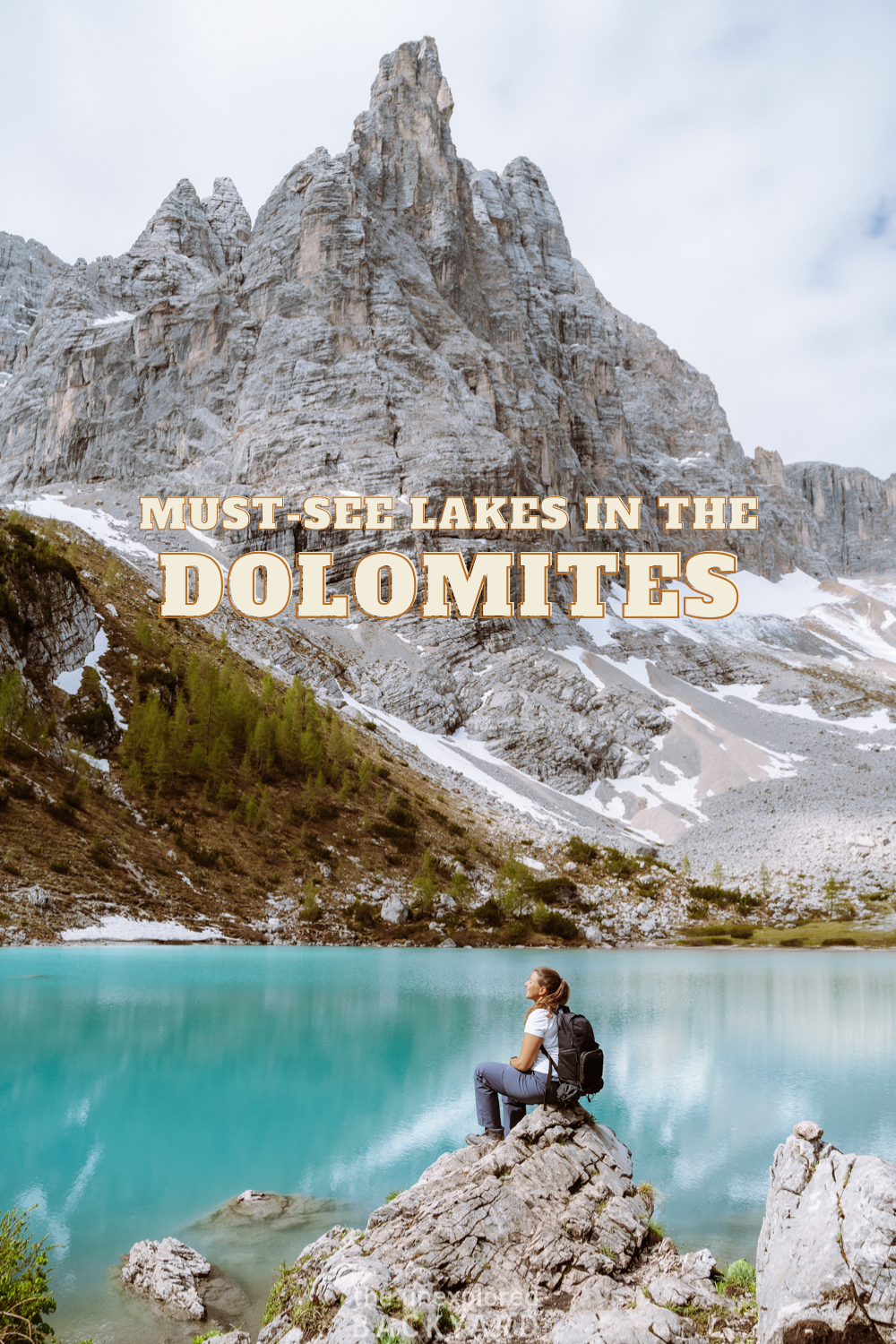
If you’re dreaming of alpine landscapes, turquoise waters, and breathtaking mountain vistas, then you must check out the beautiful lakes in the Dolomites. Nestled within Italy’s iconic Dolomite mountain range, these lakes blend natural beauty with serene ambiance, creating some of the most captivating scenery in Europe. From well-known gems like Lago di Braies, famous for its emerald hues and picturesque boathouse, to lesser-known treasures tucked away in quiet valleys, these lakes offer a refreshing escape from the ordinary.
This guide to the 8 must-see lakes in the Dolomites will take you to the region’s most stunning spots. It includes tips on how to reach them and suggestions for the best hiking trails nearby. Whether you’re seeking a peaceful day by the water, the perfect photo backdrop, or an adventurous hike, each lake has something unique to offer.
In this guide, I’ll go over how to get to the Dolomites and when the best time to visit is based on what you want to see. In addition, I’ll show you the best spots to stay in that are close to most of these lakes! For each lake, you will get a detailed description of how to visit and whether a hike is required. Regardless, I’ll provide adventure seekers with hiking options in the regions to make the most of your visit! I hope this guide inspires you to check out some of the beautiful lakes found in the Dolomites mountain range.
FAQs about lakes in the Dolomites
What is the best lake to visit in the Dolomites?
The best lake to visit in the Dolomites is often considered to be Lago di Braies (also known as Pragser Wildsee). This lake is iconic for its turquoise waters, encircled by the dramatic peaks of the Dolomites. It’s easily accessible, stunningly photogenic, and offers a variety of activities, from renting rowboats to scenic walks along its shores. Lago di Braies is popular with visitors year-round and is especially enchanting in early morning light or at sunset.
What is the largest lake in the Dolomites?
The largest lake within the Dolomites is Lago di Caldaro (Lake Kaltern), located on the southern edge of the Dolomite region. It’s known for its warm waters, which make it a favorite for swimmers and watersport enthusiasts. Among the high-altitude lakes entirely within the Dolomites, Lago di Misurina is the largest. Set against the majestic Tre Cime di Lavaredo peaks, it offers a beautiful, tranquil setting with trails and viewpoints nearby.
Can I swim in the Dolomites?
Yes, you can swim in some of the lakes in the Dolomites, although not all lakes permit it, and some can be quite cold due to their high-altitude location. Lago di Braies, for instance, is open for swimming, but the water is often chilly even in summer. In addition, Lago di Dobbiaco, Lago di Landro, and Lago di Misurina are also accessible for swimming in warmer months, making them popular with visitors looking for a refreshing dip amid the Dolomites’ scenic landscapes.
This post is all about 8 must-see lakes in the Dolomites.
Where to stay in the Dolomites
The Dolomites mountain range covers a large part of northern Italy. This means that typical driving times between locations of 1 to 2+ hours are quite common. Therefore, when planning to spend a trip to the Dolomites, I highly recommend finding accommodation that is central to the main area you want to explore. This will help you save time on driving so that you can maximize your short trip to the Dolomites.
Hotel Fameli
When visiting the Dolomites I would recommend staying at Hotel Fameli! The hotel is affordable and is situated close to 7 of the 8 lakes in the Dolomites in this guide. It’s only 20 minutes away from Lago di Braies which is arguably the prettiest lake in the Dolomites. This family-friendly hotel has lots of amenities to use after a busy day hiking, including the most gorgeous sky pool with incredible views. It also has a spa and indoor pools to enjoy if the weather is not so great. In addition, you can choose the 3/4 board option when booking your room which means that each day you get a 4-course dinner menu included in your stay. The food at the restaurant is seriously phenomenal and it alleviates the stress of cooking food after a long day or finding a suitable restaurant in the area.
My favorite feature at Hotel Fameli is the fact that most rooms come with their own private jacuzzi. I can’t think of a better way to end the day in full relaxation mode than sitting in a hot jacuzzi and enjoying a comforting book. If you are interested in staying at Hotel Fameli then you can book your stay here!
Best mid-range hotel: HOTEL de LEN
Best luxury hotel: Faloria Mountain Spa Resort
When to visit the Dolomites
The Dolomites make for a fantastic nature destination in Europe all year long! However, each season provides a completely unique experience based on the weather in this region. Below I have outlined the main things you need to know on what to expect in each season in the Dolomites. You can visit many of the lakes in this post all year round. However, some of these do require a hike and are therefore only suitable to visit during the warmer months.
Summer (June to September)
- Ideal for: Hiking, climbing, biking, and enjoying nature
- Weather: Warm, with average daytime temperatures between 15°C to 25°C (59°F to 77°F)
- Why visit: This is peak hiking season, with all trails open, and the weather is perfect for exploring the Dolomites’ iconic landscapes like Tre Cime di Lavaredo and Lago di Braies. July and August are the busiest months, so expect more crowds, especially at popular spots. June and September are less crowded but still offer good weather.
Autumn (Late September to Early November)
- Ideal for: Hiking, photography, and enjoying the fall foliage
- Weather: Cool, with temperatures ranging from 10°C to 20°C (50°F to 68°F)
- Why visit: Early autumn offers cooler temperatures and fewer tourists, making it perfect for peaceful hikes and spectacular views of the fall colors. The Dolomites’ larch forests turn golden, creating a beautiful contrast against the rocky peaks. Keep in mind that by late October, many mountain huts and tourist services may close for the season.
Winter (December to March)
- Ideal for: Skiing, snowboarding, and other winter sports
- Weather: Cold, with temperatures ranging from -5°C to 5°C (23°F to 41°F)
- Why visit: The Dolomites transform into a winter wonderland, famous for its world-class ski resorts like Cortina d’Ampezzo and Val Gardena. Snow lovers can enjoy alpine skiing, snowshoeing, and cozying up in mountain lodges. Winter is also great for Christmas markets and festive charm.
Spring (April to May)
- Ideal for: Relaxation and sightseeing
- Weather: Cool and often rainy, with temperatures between 5°C to 15°C (41°F to 59°F)
- Why visit: Spring is the quietest time, but many trails may still be snow-covered, and the weather can be unpredictable. It’s not the best time for outdoor activities, but if you prefer a tranquil experience without crowds, you can still enjoy scenic drives and low-elevation walks.
How to get to the Dolomites
Getting to the Dolomites can be a little tricky. This is because there isn’t really an airport in the Dolomites you can fly to. The closest option to this would be Bolzano Airport (BZO), which is located on the edge of the Dolomites, however, this is a small regional airport with limited flight options. Therefore, when planning a trip to the Dolomites, it’s important to consider which airport to fly to, and how easy it is to reach the Dolomites from there. Below is an overview of all of the airports in the region and how to get to the Dolomites from them. Under each airport, you can check whether you have any direct or cheap flights going there for your convenience!
Bolzano Airport (BZO)
Bolzano Airport is located just 6 km outside of the city center. While Bolzano is not actually located in the Dolomites region, it lies right on the edge making it super accessible to start exploring the Dolomites as soon as you land! However, the Bolzano Airport is a small regional airport with limited services. You can find domestic flights going here from other Italian cities such as Rome, and the occasional seasonal flight from another European country.
In addition, flying into Bolzano can be pretty expensive since it’s not a popular airport. If you are flying to the Dolomites as a connection from another region in Italy and find a cheap flight, then I can definitely recommend it. Otherwise, if you are coming from abroad, you will likely extend your flight time by several hours due to connections. If so, I recommend considering one of the airports below.
Venice Marco Polo Airport (VCE)
One of the most popular options for getting to the Dolomites is flying into Venice Marco Polo Airport. This is a pretty large airport so there are typically lots of direct flight options including low-cost options. The airport is located only 15-20 minutes away from the Venezia Mestre train station. This means that it’s easy to reach trains going to cities such as Bolzano or Trento, as well as exploring Venice for a few hours if you are already there 😉.
From the Venice Marco Polo Airport, it will take you anywhere between 2-3 hours to reach the Dolomites by either car or train. As far as accessibility goes, Venice is one of the best options for getting to the Dolomites as it is fairly close to the region.
Milan Bergamo Airport (BGY)
The Milan Bergamo Airport is where I personally flew in to reach the Dolomites. This is probably the furthest airport from all of the options on this list but also the best in terms of price and convenience. Milan Bergamo Airport is known to operate a lot of low-cost flights such as Ryanair as well as direct flights to many destinations around the world. If flight cost and time are more important for you then definitely consider flying into BGY.
However, this means that once you are in Italy, getting to the Dolomites is going to take a longer time. When we arrived I planned to take public transport to Bolzano and then to pick up our rental from there to save some of the driving time. However, the easiest way to get to Bolzano from BGY involves switching trains twice and we ended up missing both our connecting trains since the first one was delayed. Based on this experience, I highly encourage you to pick up your rental at the airport and drive to the Dolomites yourself to avoid this chaotic experience. It’s around a 4 hour drive but you can break it up and spend some time exploring cities on the way.
Innsbruck Airport (INN)
Innsbruck Airport is also a very convenient option when flying to the Dolomites. In terms of distance, Innsbruck is located roughly 1.5 hours away from cities such as Trento and Bolzano making it the quickest way to reach the Dolomites. While you could drive there yourself since Innsbruck is located in Austria, most rental companies will charge a fee for crossing the border, so taking the train will probably be cheaper in the long run. The only downside of flying to Innsbruck is that flights are typically pretty expensive.
Renting a car in the Dolomites
Should you rent a car?
In my opinion, renting a car is a must especially if you will only be spending a weekend in the Dolomites! Most hikes and interest points in the region are pretty spread out so relying on public transport will definitely limit how many spots you can visit on a weekend in the Dolomites. In addition, the Dolomites are known to have very unpredictable weather. That means that flexibility is key and you may need to adjust your plans last minute to accomodate this. Many shuttle services require you to book your tickets in advance meaning you won’t be able to change your plans during your trip.
Where to find a rental car
When it comes to car rentals I am a huge fan of using Sunny Cars! I have been using their services for years and have always had such a positive experience. Sunny Cars operates in most countries and always has the cheapest rates that I can find. In addition, they include unlimited mileage, cancellations up to 24 hours in advance, and the most comprehensive insurance package I have seen. Best of all, if you end up needing to pay your deposit for the car, Sunny Cars will refund it to you!
Book your rental with Sunny Cars here!
While renting a car in the Dolomites, it’s important to consider a few things before choosing your rental. In general, manual cars are better since the roads can be very windy, and can be very steep. Therefore, having a manual car that you can control will make driving here easier. That being said, if you’re not a confident manual driver – stick to automatic! In addition, due to the steep roads, you want to make sure the car has enough horsepower. Lastly, in some areas, the roads are quite narrow so you’re better off having a smaller car than a big jeep.
8 must-see lakes in the Dolomites
1. Lago di Braies
Lago di Braies is one of the most picturesque (and famous) lakes in the Dolomites. Even though it can get quite crowded during the day, it truly lives up to the hype. If you’d like to avoid the crowds, then I recommend coming either early in the morning or late in the afternoon. A lot of creators come here to take photos during sunrise so you probably won’t be completely alone, but it will definitely be quiet. Alternatively, golden hour is another quiet time of day offering stunning views of the lake. While I personally haven’t been here during sunset, I imagine it’s just perfect.
If you would like to enjoy the quiet morning hours but don’t want to visit as early as sunrise, I recommend visiting when the boat rental opens up. This changes seasonally but it is usually either at 8 or 9 AM. You can find their exact opening times here. Due to the lake’s rising popularity, in peak season there is sometimes a toll road set up to limit the amount of vehicles at the lake. Make sure to check whether there are any restrictions before your visit here.
Things to do at Lago di Braies
The best thing to do at Lago di Braies is rent a wooden row boat. It’s not a cheap activity as it costs 50 euros for 45 minutes, but I promise it is so worth it. I’ve been here twice now, and the first time we didn’t rent a boat which I ended up regretting so much. This second trip coming back and renting a boat here was high on my bucket list and it was oh-so worth it. As I previously mentioned, the boat rental has seasonal opening hours but it’s typically around 8 AM to 4 PM.
You can’t book the boats in advance so it’s on a first-come first-serve basis. The line can get extremely long so I would recommend coming before they open to secure a boat. You will of course also be able to rent one later in the day, but make sure to plan for a long waiting time. Lastly, they do take card payment but the internet service there can be quite bad, so definitely also have cash in case it doesn’t go through.
Another must-do activity while visiting Lago di Braies is hiking around the lake. This is a very easy hike of 4 km and takes around 1-2 hours depending on how often you stop to take some photos. Most visitors come to take the “iconic” photo of the lake and leave which is such a shame. If you have enough time to loop the whole lake then I highly recommend it. You can also find some “beaches” along the lake where you can relax and even go for a swim! The water here is cold all year round, but that just makes it all the more refreshing 😇.
Practical Information:
Location: Lago di Braies (also called Pragser Wildsee in German) is located in the Valle di Braies region.
Accessibility: Lago di Braies is located just 5 minutes from the car park.
Parking: To reach Lago di Braies navigate to “Parking P4 Lago di Braies“. Parking here is quite expensive as it costs 15 euros for 3 hours, but I still think it’s worth it. You can find cheaper parking lots further away but you will be required to walk quite a bit to reach the lake.
Public Transport: There is a public bus you can take to Lago di Braies. Bus number 442 goes from the village of Dobbiaco (also called Toblach). Mobile cards, guest passes, and the südtirolpass are all valid on the bus. You can find an up-to-date bus schedule here.
Hiking Nearby: You can hike around the whole lake which is a fun and easy hike. It is only 4km and takes around 1-2 hours. If you are looking for a more challenging hike in the area then that is also possible. The first option is the Hochalpenkopf Peak Hike which is around 17 km and moderate in difficulty. The second option is the Seekofel Peak Hike which is around 15 km and is quite difficult. The last and easiest option is a quick add-on to the circuit trail around Lago di Braies. During the trail circling the lake, you can take a 45-minute detour to Val di Foresta.
2. Lago di Sorapis
Lago di Sorapis is one of the most special lakes in the Dolomites! Located at an altitude of 1,923 meters, this mesmerizing glacial lake is like no other place in the Dolomites. The only way to reach the lake is by foot or helicopter. The hike itself is of moderate difficulty and around 900 meters of elevation gain. One thing to note is that you are not allowed to swim in the water! The famous turquoise color is visible thanks to the dust of the surrounding rocks and swimming is prohibited to protect this special lake.
Lago di Sorapis is probably my favorite lake of all of the ones in this post. So if there is one lake in the Dolomites you seriously can’t miss, it’s Lago di Sorapis. However, for your own safety DO NOT do this hike if it has been raining recently. The trail is often exposed and can be extremely dangerous is slippery.
How to get to Lago di Sorapis
To start the trail, park by the free gravel parking lot close to B&B Hotel Passo Tre Croci Cortina. The parking lot is called Parcheggio per Sorapis, but you can also find the exact spot by clicking here. After parking, make your way towards the B&B and continue along the main road. You will see a map and a trail to your right (on the same side as the B&B). Simply follow this trail, and look for any signs toward Rifugio Alfonso. In general, the trail is very easy to follow and you cannot get lost.
While the trail is not dangerous and of moderate difficulty, there are a few exposed sections, so walk with caution. I wouldn’t recommend hiking here after rainfall, as the trail may be slippery and dangerous. The hike is around 12 km round trip, and to get back simply follow the same trail down. I would plan for 5-6 hours for this hike including time at the lake itself.
Practical Information:
Location: Lago di Sorapis is located in the province of Belluno.
Accessibility: Lago di Sorapis is only accessible through a moderate 12 km hike.
Parking: You can find free parking at a gravel lot called Parcheggio per Sorapis on Google Maps. From the parking lot, it’s a quick walk to the start of the trail. While the free parking lot is large it can easily fill up on a sunny day. Therefore, I would recommend starting the hike before 9 AM.
Public Transport: If you don’t have a car you can take the bus from Cortina d’Ampezzo to Misurina. The bus stop closest to the hiking trail is called Passo Tre Croci. Click the link to see how you can best get to the hiking trail from where you are staying.
Hiking Nearby: The main hike here is the moderate hike using trail #217 to Rifugio Alfonso. If you are looking for a more challenging route, then take route #216 through Forcella Marcoira. If you choose the harder trail make sure to use hiking poles. This trail is often preferred on the way up for the panoramic views.
3. Lago d’Antorno
Lago d’Antorno is one of the most overlooked lakes in the Dolomites! Located just before the toll road going up to the Tre Cime peaks most hikers completely skip this lake. Since most if not all visitors complete the Tre Cime di Lavaredo hike while visiting in the Dolomites, I would argue that most need to also see Lago d’Antorno. With incredible views of the back side of the Tre Cime peaks, it’s easily become one of my favorite lakes in the Dolomites. If you are planning to hike the Tre Cime peaks during your visit, then make sure to reach my guide below!
Read More: Tre Cime di Lavaredo Circuit Trail.
The only downside to visiting this lake is the lack of parking spaces. Since parking by the lake is free, many hikers park here early in the morning. This is because this way they can avoid paying the toll road fees to the Tre Cime hike. If you manage to find parking space during the day, make sure to spend some time here. There isn’t a lot to do, but you can easily walk around the whole lake in around 20 minutes. In addition, there are some great photo opportunities here!
Practical Information:
Location: Lago d’Antorno is located in the province of Belluno.
Accessibility: Lago d’Antorno is easily accessible as it is located right next to the parking lot.
Parking: You can find free parking at the “Parcheggio Libero” located right by the lake.
Public Transport: You can take either bus 31 or shuttle 444 to Lago d’Antorno. Bus number 31 runs from Tal di Cadore up to Rifugio Auronzo. In addition, shuttle number 444 drives from Dobbiaco to Lago d’Antorno. You can find the bus stop by the lake here to check how to get there from your location.
Hiking Nearby: The trail circling Lago d’Antorno can barely be considered a hike. However, you can actually start the hike to Tre Cime from here. The section from Lago d’Antorno to Rifugio Auronzo is actaully harder than the Tre Cime di Lavaredo circuit trail. Therefore, I would personally recommend parking by the Rifugio and then hiking the Tre Cime and Cadini di Misurina trails from there.
4. Lago di Dobbiaco
Lago di Dobbiaco is absolutely beautiful and well-known for its dramatic mountain views. While it is one of the more-known lakes in the Dolomites, I promise you that it is worth the hype. In addition, it is one of the few lakes you can swim in while visiting the Dolomites!
One of the best things you can do at Lago di Dobbiaco is rent a paddle boat to explore the lake from the water. You can find the boat rental by the Seerestaurant, as it doesn’t look like they have much online presence. It should cost around 8 euros for half an hour and 15 euros for a full hour. In addition, I recommend bringing cash with you just in case they don’t accept card payments. Another must-do activity at Lago di Dobbiaco is to walk around the whole lake. The route is around 2.5 km long and it should take around an hour to complete.
Practical Information:
Location: Lago di Dobbiaco is located just south of Dobbiaco town in Val di Landro.
Accessibility: Lago di Dobbiaco is located just by the parking lot making it easily accessible.
Parking: You can find a parking space in “Parcheggio Lago di Dobbiaco” which costs 2 euros per hour.
Public Transport: You can take bus 445 from Dobbiaco Autostazione which runs every 2 hours. It’s a quick 10-minute journey to reach Lago di Dobbiaco from Dobbiaco town.
Hiking Nearby: If you are interested in starting a hike from Lago di Dobbiaco then you have a couple of options. The first and easiest hike is the trail circling the lake which takes an hour to complete. If you’re interested in a harder climb then you could consider hiking to Sarlkofel. There is a route starting at Lago di Dobbiaco which takes 3.5 hours each way and includes 1,100 meters of elevation. Lastly, if you want to gain some height and enjoy a stunning view over the lake, then consider hiking the Troge Loop which takes around 3.5 hours in total.
5. Lago di Carezza
Of all of the lakes in the Dolomites mentioned in this guide, Lago di Carezza is arguably the most picturesque. If you are lucky enough to have good conditions when visiting then I guarantee that you will absolutely fall in love with this lake. Lago di Carezza is one of the smaller lakes in the Dolomites yet it has attracted a lot of attention in the last few years. You really can’t beat the combination of dramatic peaks and turquoise water 🥺.
With its rising popularity, a lot of infrastructure has been put in place to support the amount of tourists while protecting the lake. First of all, the lake is closed off by a wooden fence meaning you can’t go all the way down to the water’s edge. Luckily this fence blends nicely in with the scenery and offers a protective layer to preserving the lake. In addition, there are several gift shops and restaurants just opposite the lake by the car park. While it’s unfortunate to see the lake being commercialized in this way, it makes sense considering the amount of visitors that come here.
In the last few years, Lago di Carezza has become of of the most famous lakes in the Dolomites. Naturally, this means that it has gotten very busy. Since the lake itself is quite small, you will really feel the crowds here. I still think it’s very worth visiting Lago di Carezza, but it’s also important to adjust your expectations accordingly. If you want to visit without the crowds, then make sure to arrive early in the morning or around sunset.
Practical Information:
Location: Lago di Carezza is located in the Trentino Alto-Adige region.
Accessibility: Lago di Carezza is located just a 5 minute’s walk from the parking lot making it very accessible to visit.
Parking: While visiting you can park at “Parcheggio Lago di Carezza” which costs 2 euros per hour.
Public Transport: You can easily reach Lago di Carezza by public transport. Bus number 180 drives directly to the lake from Bolzano Busbanhof and the journey takes 50 minutes in total. The bus drives here every hour making it one of the more frequent lines in the Dolomites.
Hiking Nearby: There are many hikes you can do near Lago di Carezza. Since the lake is already located at a high altitude, there are a lot of harder hiking options available here. Since I personally haven’t done any hiking nearby, I don’t feel qualified to recommend a specific trail. Instead, you can find a list of the best hiking trails near Lago di Carezza here.
6. Lago di Landro
Lago di Landro is one of the most underrated lakes in the Dolomites in this guide. It is located just 10 minutes away from Lago di Dobbiaco but most travelers choose to only visit the larger lake of the two. However, Lago di Landro is such a gem as it has a pretty long stretch of pebble beach offering visitors the perfect swim spot. In addition, this lake is no short of incredible mountain views all around 😍.
The best thing to do at Lago di Landro is definitely to go swimming. Even if you aren’t a fan of the cold water, then you can still come and relax by the lake and enjoy the sounds of nature. As with all of the other lakes in the Dolomites, there is also a trail surrounding the lake that is perfect for a leisurely walk. Since there isn’t too much to do here, planning to spend around an hour here is perfect!
Practical Information:
Location: Lago di Landro is located in the Val di Landro region.
Accessibility: Lago di Landro is located just next to the parking lot making it easily accessible.
Parking: When visiting you can park at “Area di Parcheggio Lago di Landro” which costs 2 euros per hour.
Public Transport: Lago di Landro can be reached by public transport by taking bus number 445 from Dobbiaco Autostazione. It takes around 30 minutes to reach the lake from Dobbiaco.
Hiking Nearby: As mentioned, you can walk around the entire lake as an easy hiking option. In addition, many hiking options include the lake trail and various viewpoints of the Tre Cime peaks. These are great options for easier hikes with low elevation gain that offer incredible views. You can find a list of hikes near Lago di Landro here.
7. Lago di Misurina
Lago di Misurina is one of the biggest and most popular lakes in the Dolomites. This lake offers a lot of attractions so you can easily spend an afternoon here. Lago di Misurina offers some incredible views as it has the Tre Cime peaks at one end and the iconic yellow building with mountain backdrops at the other end. This lake is a photographer’s dream so if you love a dramatic landscape, then you have to stop here.
Some of the best things to do at Lago di Misurina include going for a chilly swim or renting a row boat to explore the lake. You can find a boat rental spot by Parcheggio Pubblico 2, and I recommend bringing cash with you if you plan to rent a boat. As with all of the other lakes in the Dolomites, you can also take a nice walk around the lake to enjoy the panoramic views. Since Lago di Misurina is the biggest lake in the Dolomites, there are also lots of amenities here. That includes a variety of shops and restaurants as well as hotels.
Practical Information:
Location: Lago di Misurina is located in the province of Belluno.
Accessibility: Lago di Misurina is located right by the parking lot so it’s very easy to access.
Parking: There are two main parking lots at Lago di Misurina. If you are coming from the north then I recommend parking here. However, if you are coming from the south then I recommend parking here for convenience. It should cost around 2 euros per hour to park here regardless of which parking lot you choose.
Public Transport: To get to Lago di Misurina by public transport you can take the Dolomiti bus number 30/31 from Cortina d’Ampezzo going to Rifugio Auronzo. Make sure to take the line driving through Misurina.
Hiking Nearby: Lago di Misurina is located just a few kilometers from the toll road to Rifugio Auronzo. Therefore, one of the best hikes in the area is the Tre Cime di Lavaredo hike. In addition, while in the area a hike to the Cadini di Misurina viewpoint is an absolute must. This is one of the most photogenic spots in the Dolomites so I highly recommend you to check it out.
8. Laghi dei Piani
The Laghi dei Piani lakes are not necessarily official lakes in the Dolomites however I felt they should be included because they are so stunning. These lakes are actually found along the Tre Cime di Lavardeo Circut Trail by Rifugio Locatelli. Since they are high alpine lakes found along one of the tallest trails in the Dolomites, the views are absolutely phenomenal. Due to this I simply had to mention them in this guide about the best lakes in the Dolomites.
The main thing to do at Laghi dei Piani is enjoy the views of the lakes against the dramatic peaks all around. In addition, if you want to see an extra lake along the hike you can take a 20-minute detour to this third alpine lake. To reach these lakes you must do at least part of the Tre Cime hike, therefore I have linked my full guide below with all of the details on how to visit!
Read More: Tre Cime di Lavaredo Circuit Trail.
Practical Information:
Location: The Laghi dei Piani lakes are located in the Sexto region.
Accessibility: The Laghi dei Piani lakes are only accessible by completing at least half of the Tre Cime di Lavaredo Trail. The section of the hike taking you to these lakes will take around 1 hour each way.
Parking: You can find a large parking lot at Rifugio Auronzo which has space for a maximum of 400 cars during the hiking season. Therefore, it is recommended to either come early in the morning or later in the afternoon. To park here you must drive through a toll road which costs 30 euros to access per car (including parking).
Public Transport: There are several ways to reach the Tre Cime hiking trail by public transport. The easiest way would be to take bus 31 from Tal di Cadore to Rifugio Auronzo to begin the hike.
Hiking Nearby: Although getting to Laghi dei Piani already requires a hike, I recommend checking out which other trails are in the region. From Rifugio Locatelli, there are several hiking trails you can take to extend your hike. The only thing to note is that some of the trails in the area are Via Ferrata, so make sure to check in advance.
That concludes my guide to the best lakes in the Dolomites. These lakes are all must-see spots and I highly recommend you visit them all if you have the time! In general, I made this guide in the order of my personal favorite lakes in the Dolomites. Therefore, if you need to choose among them, I recommend picking from the top of the list 🙈. I hope this guide has provided you with all of the information you need to visit the best lakes in the Dolomites.

